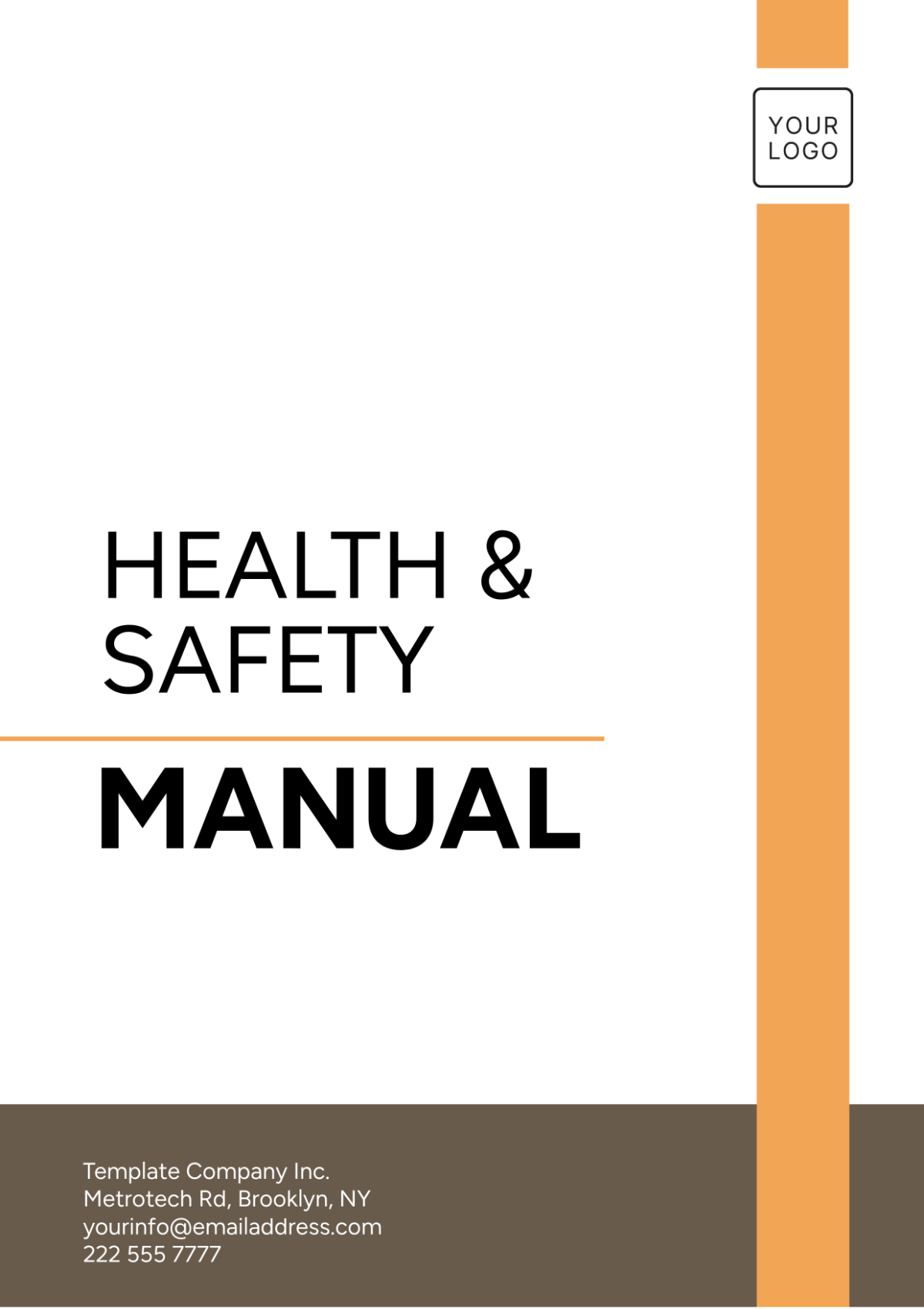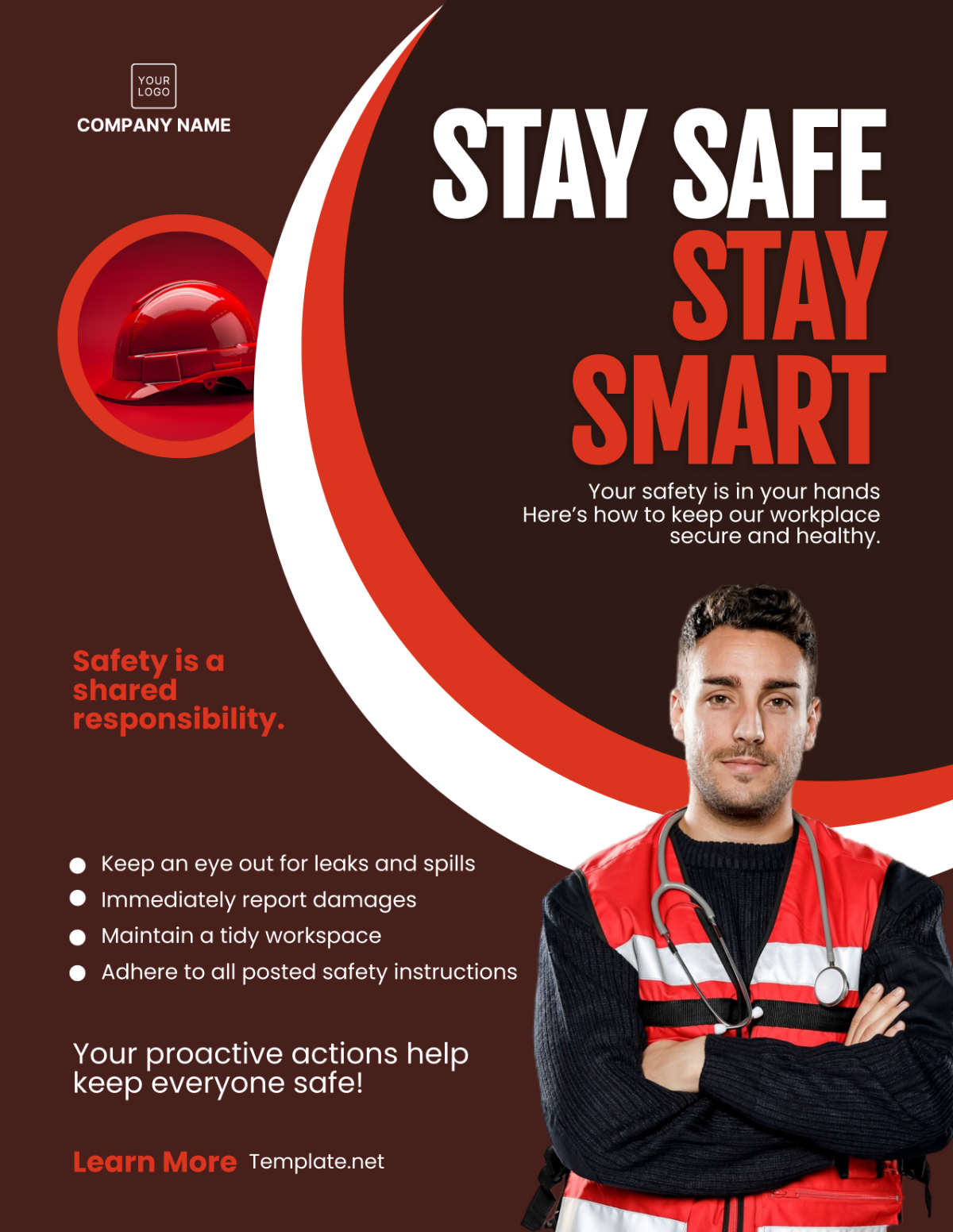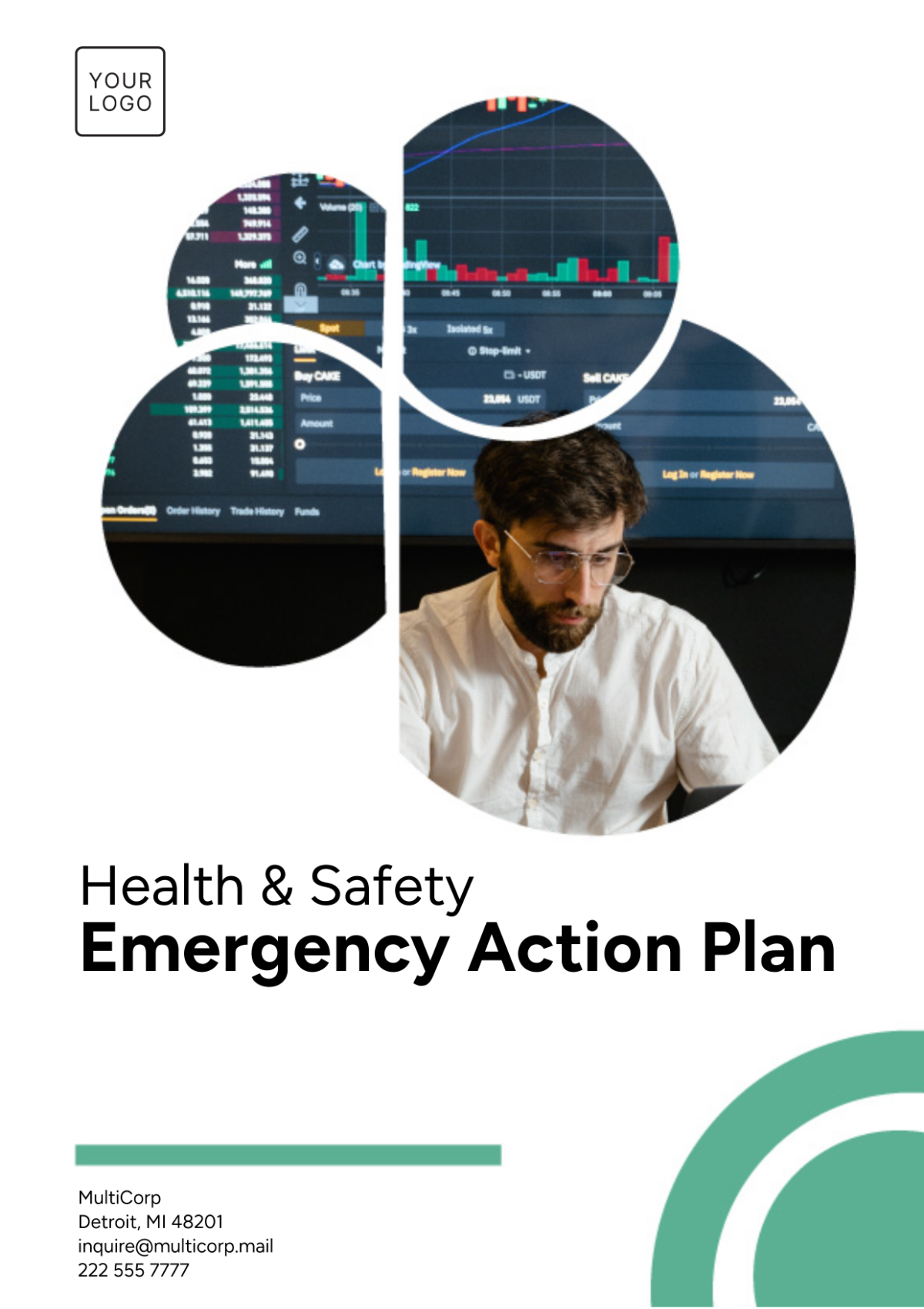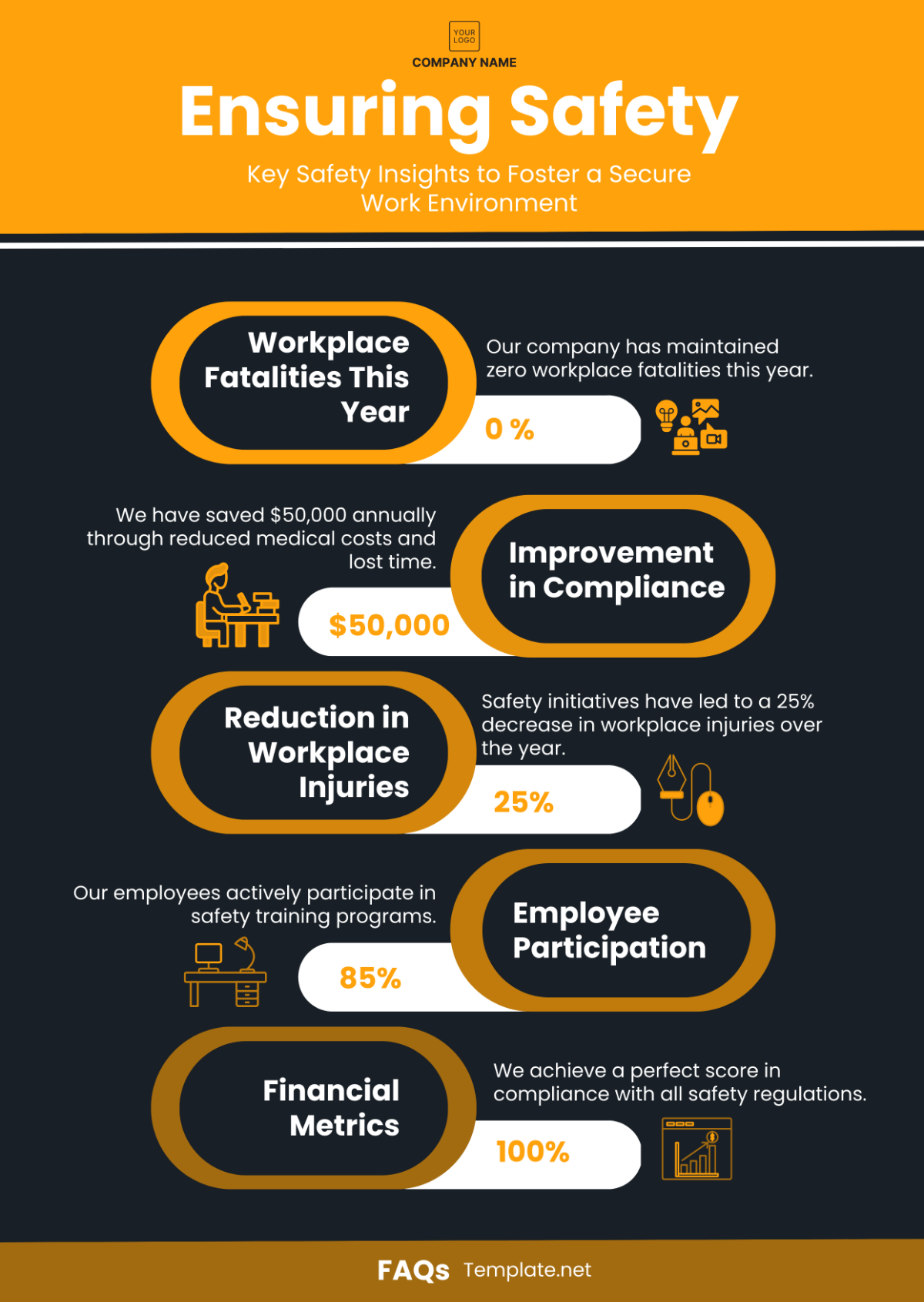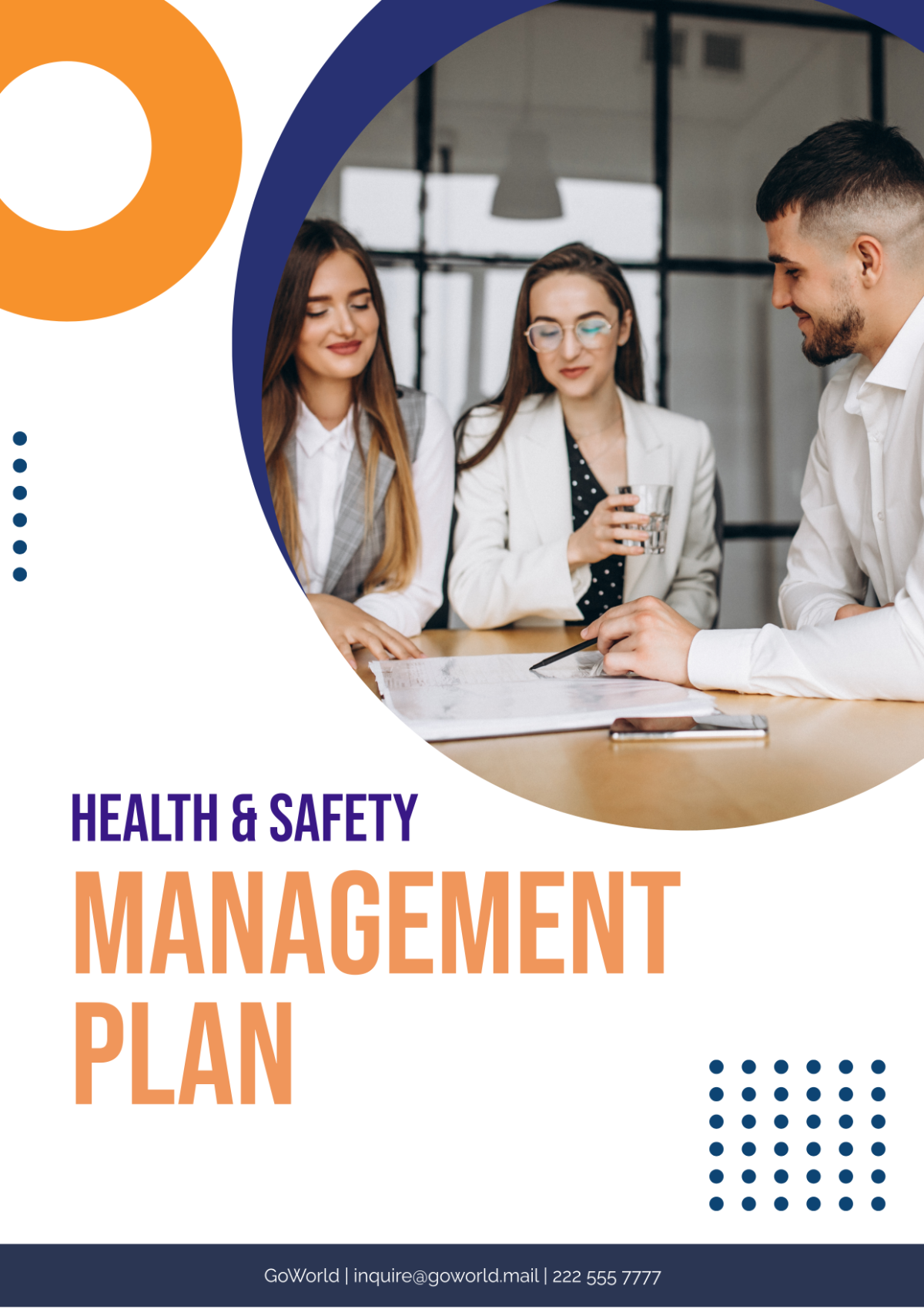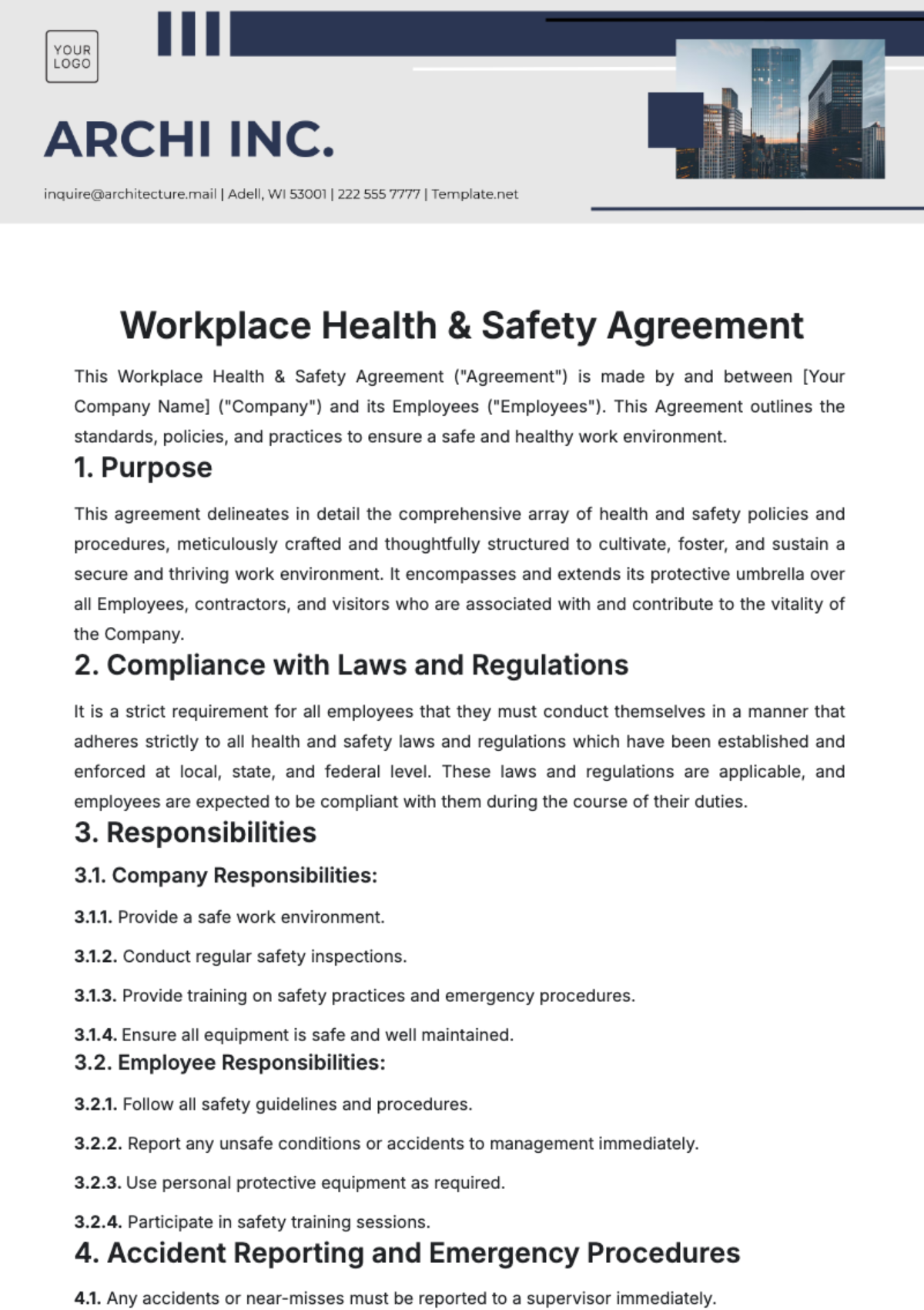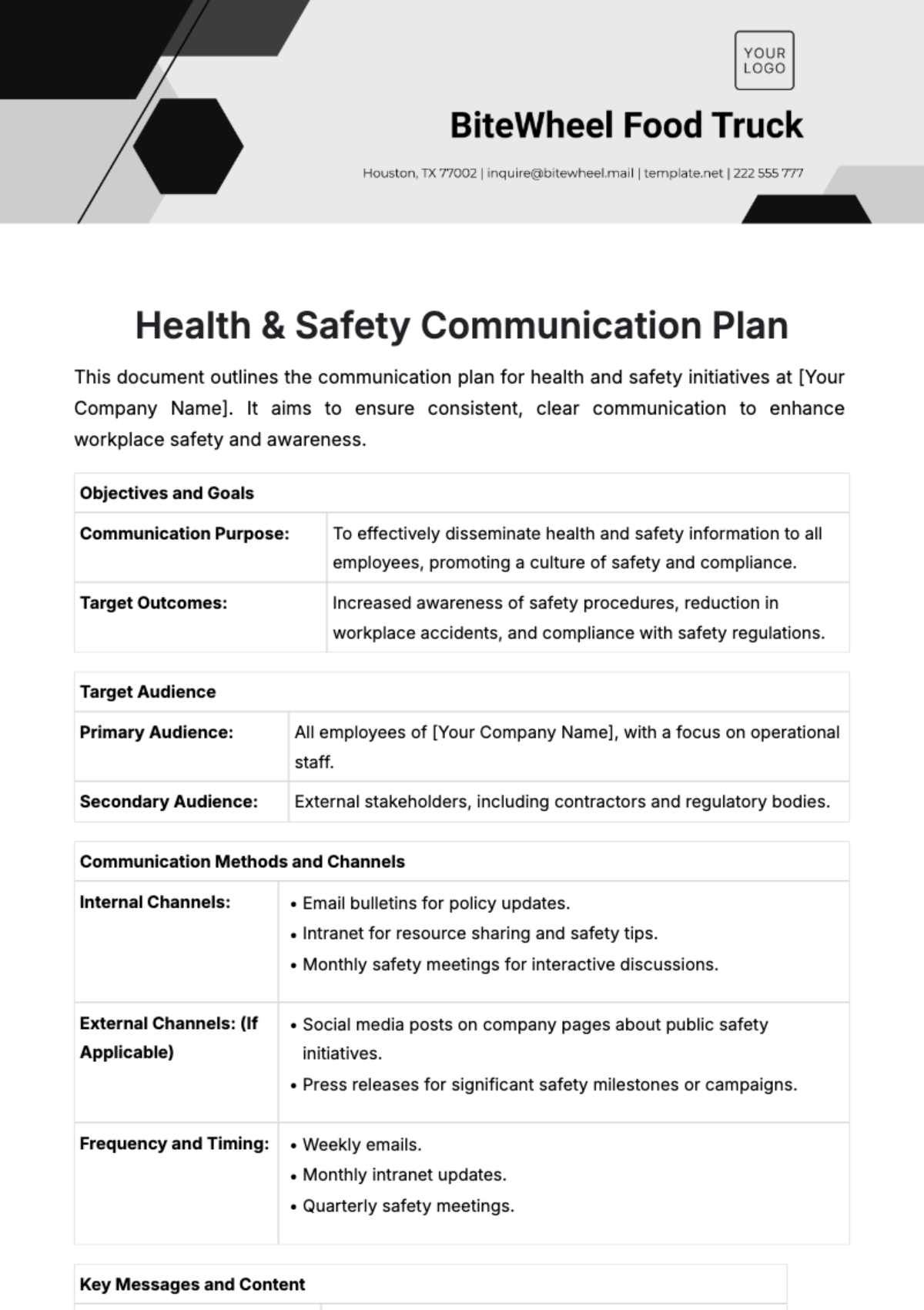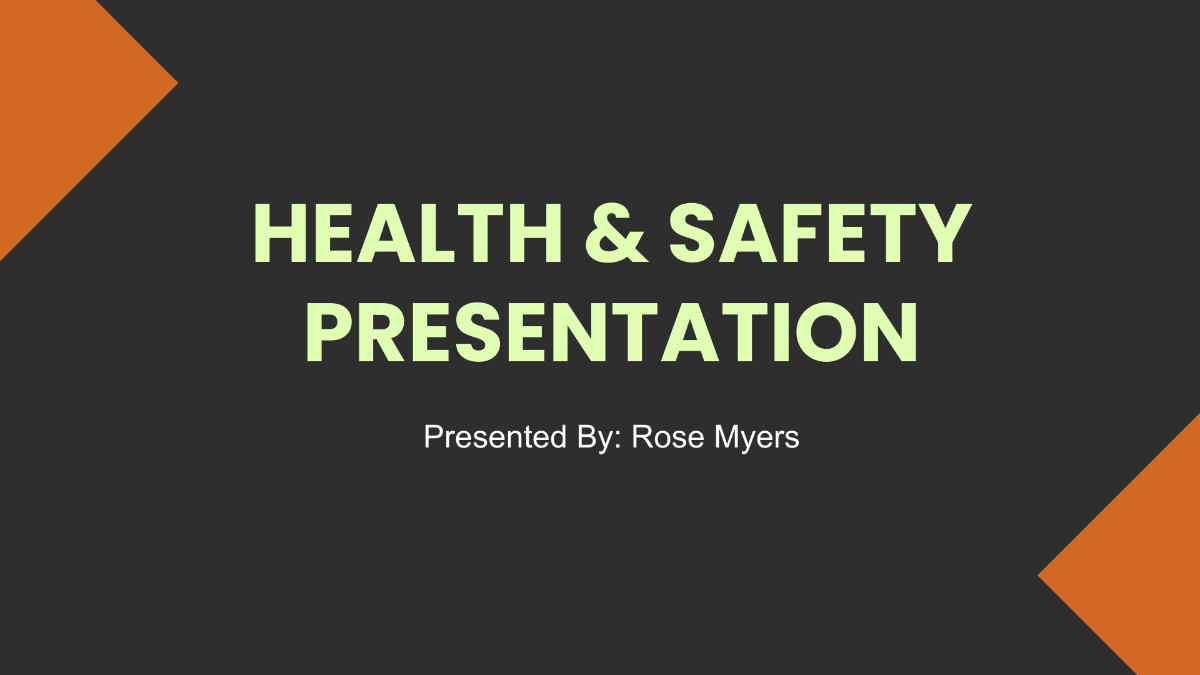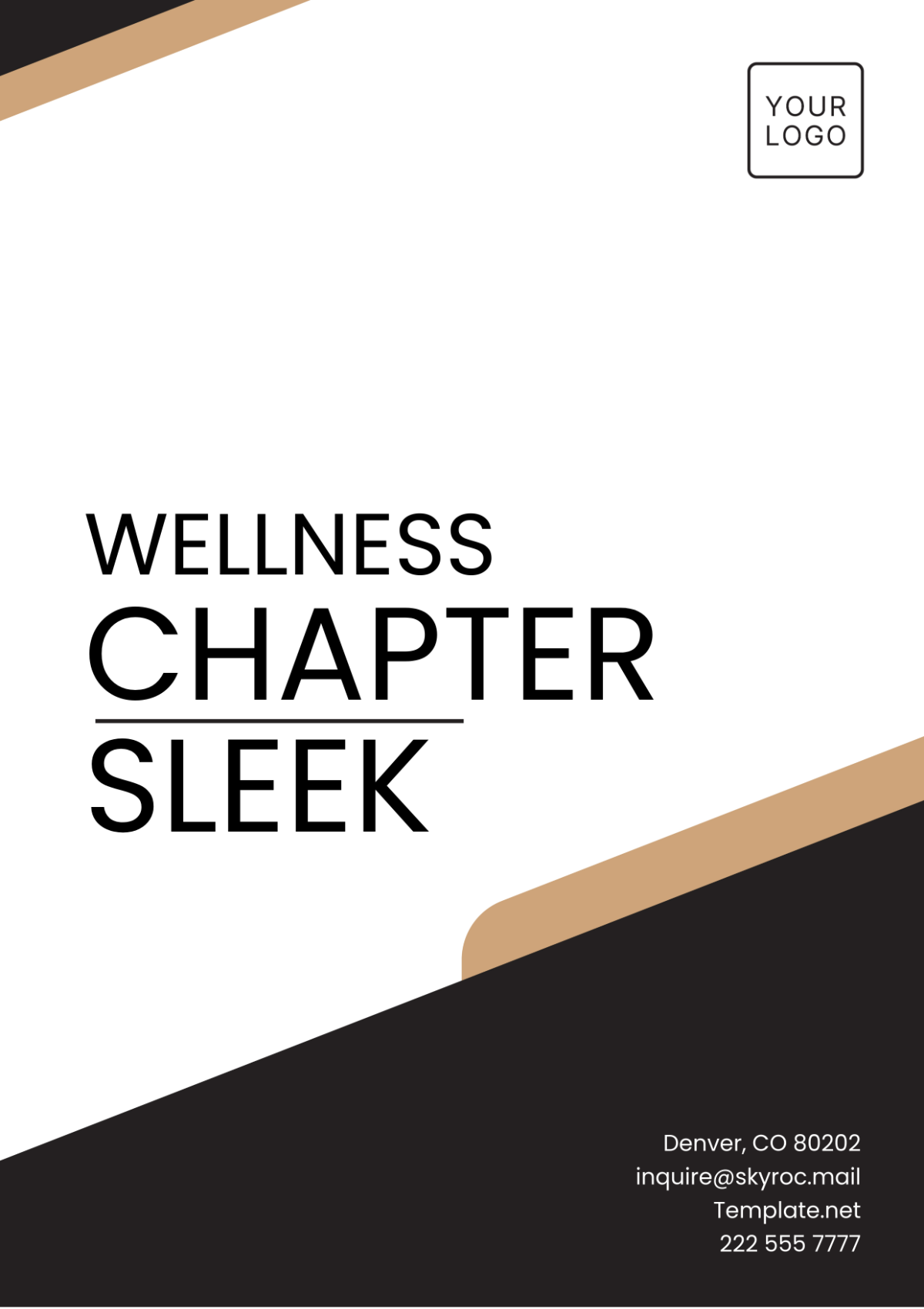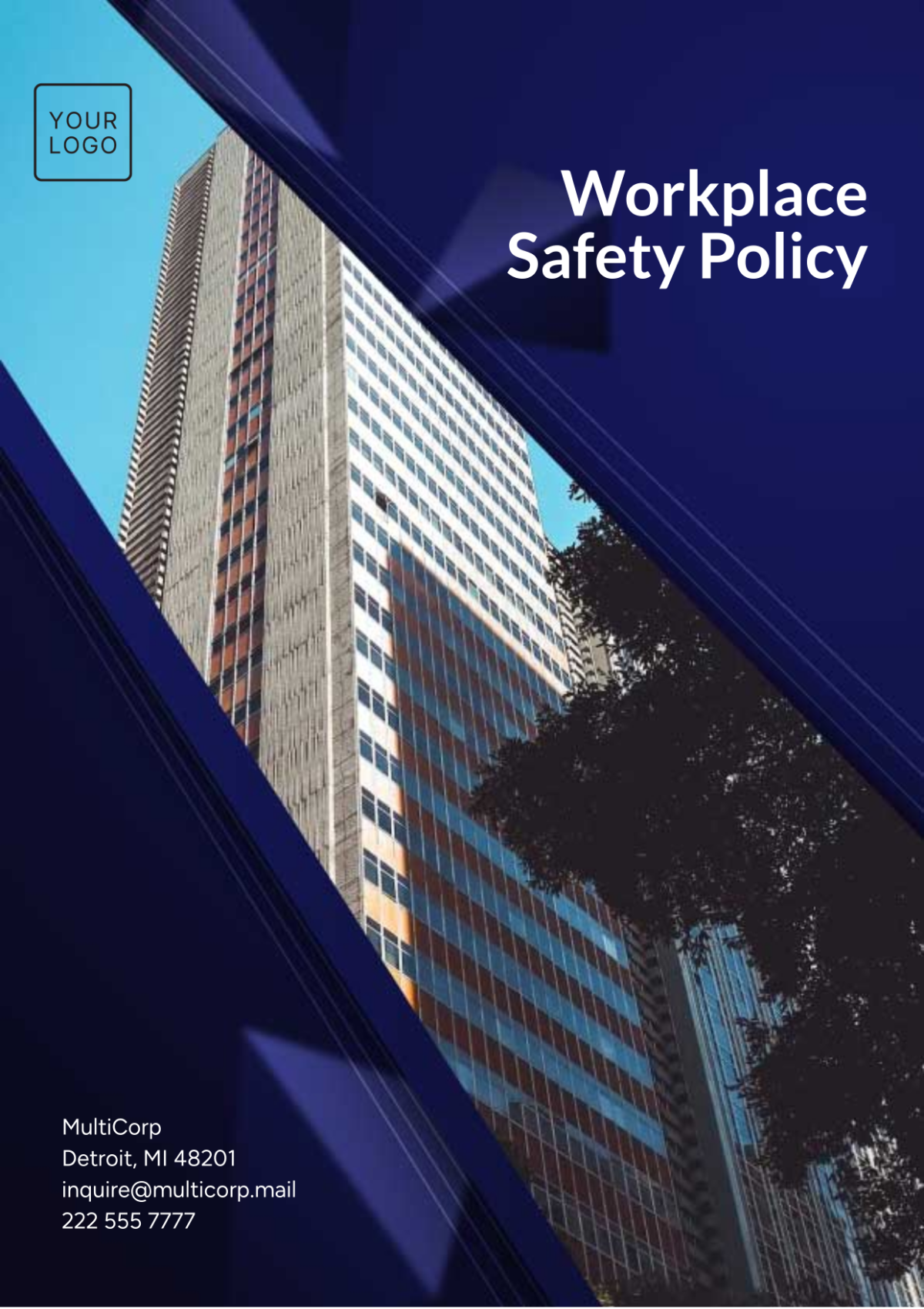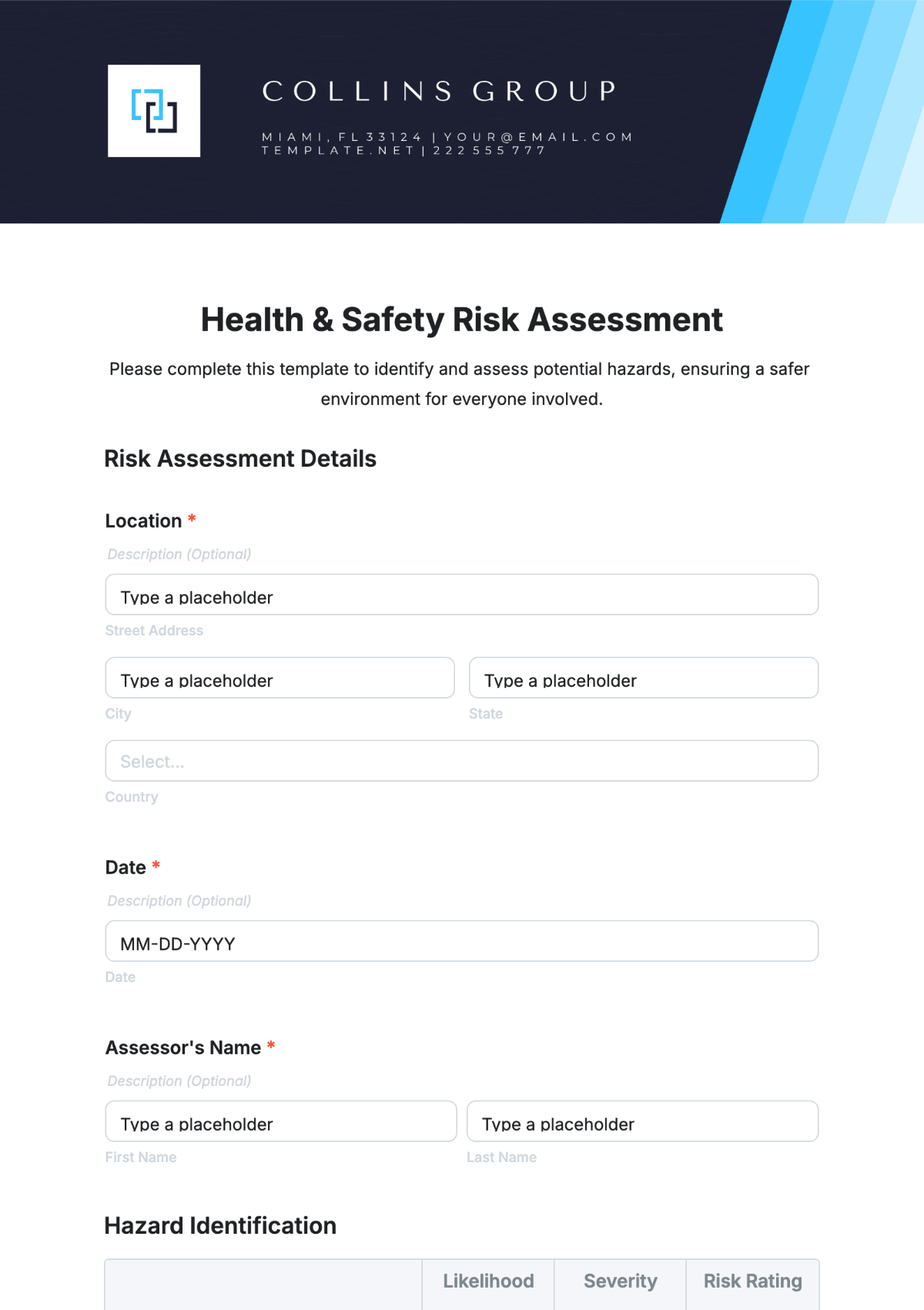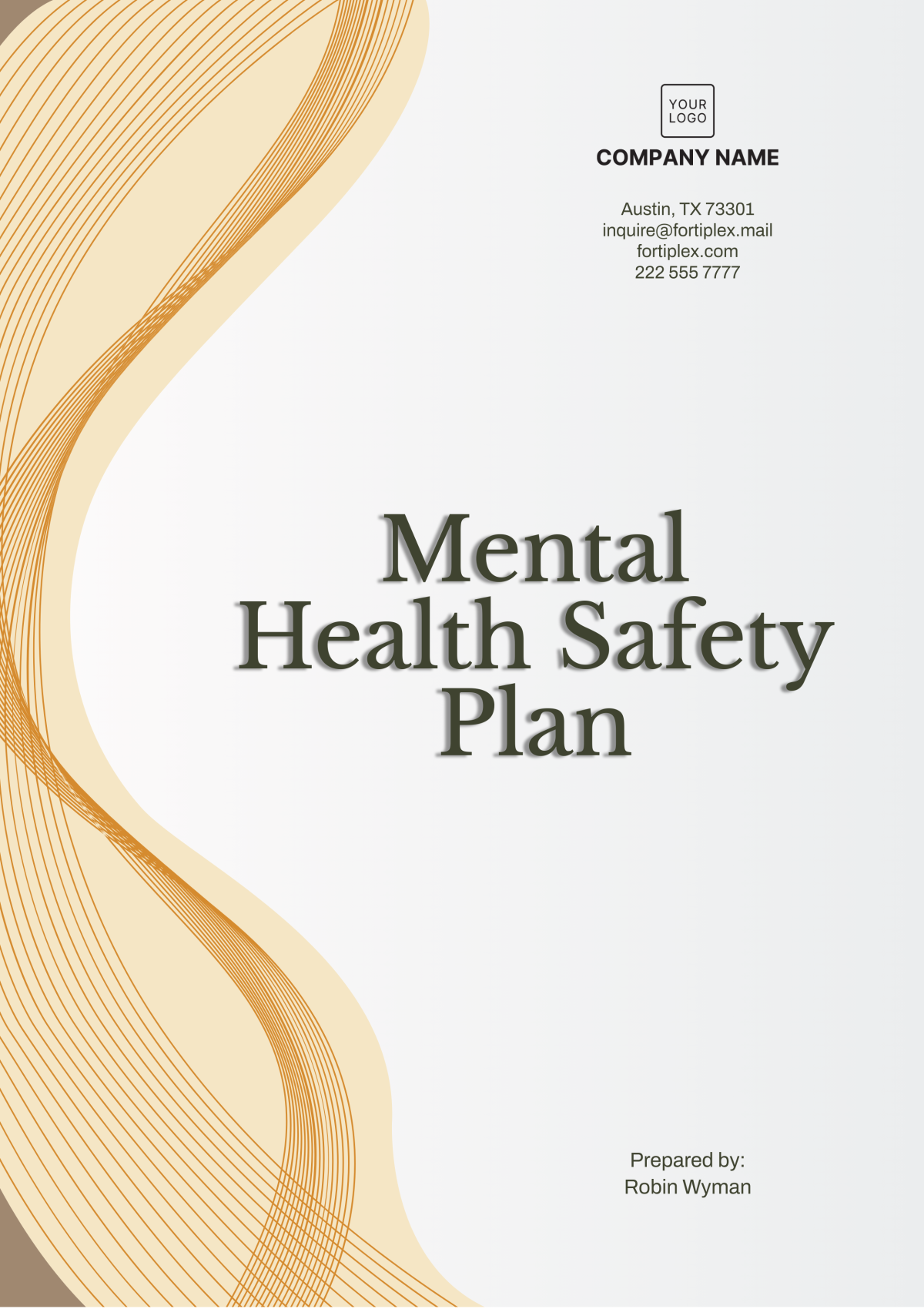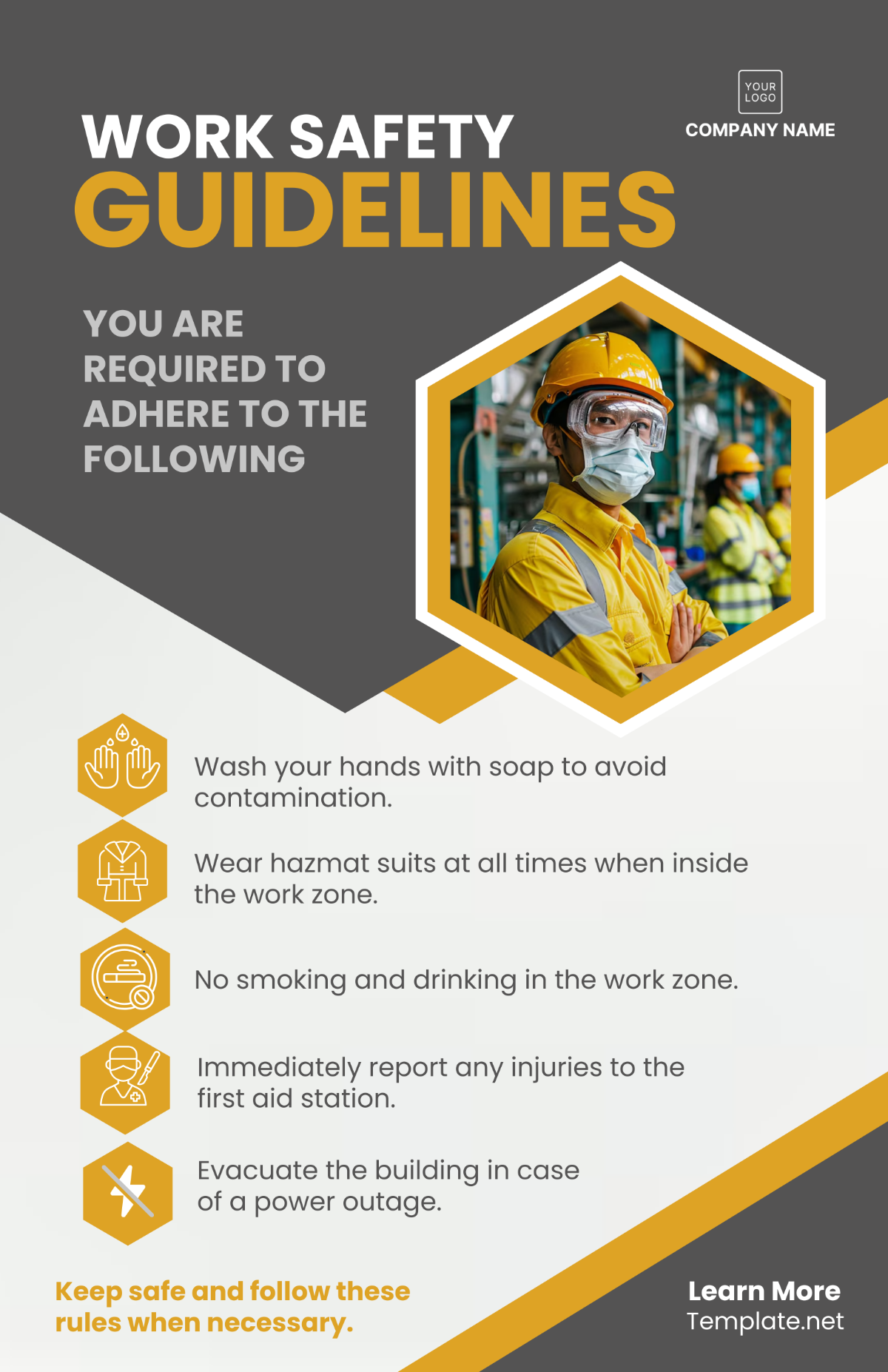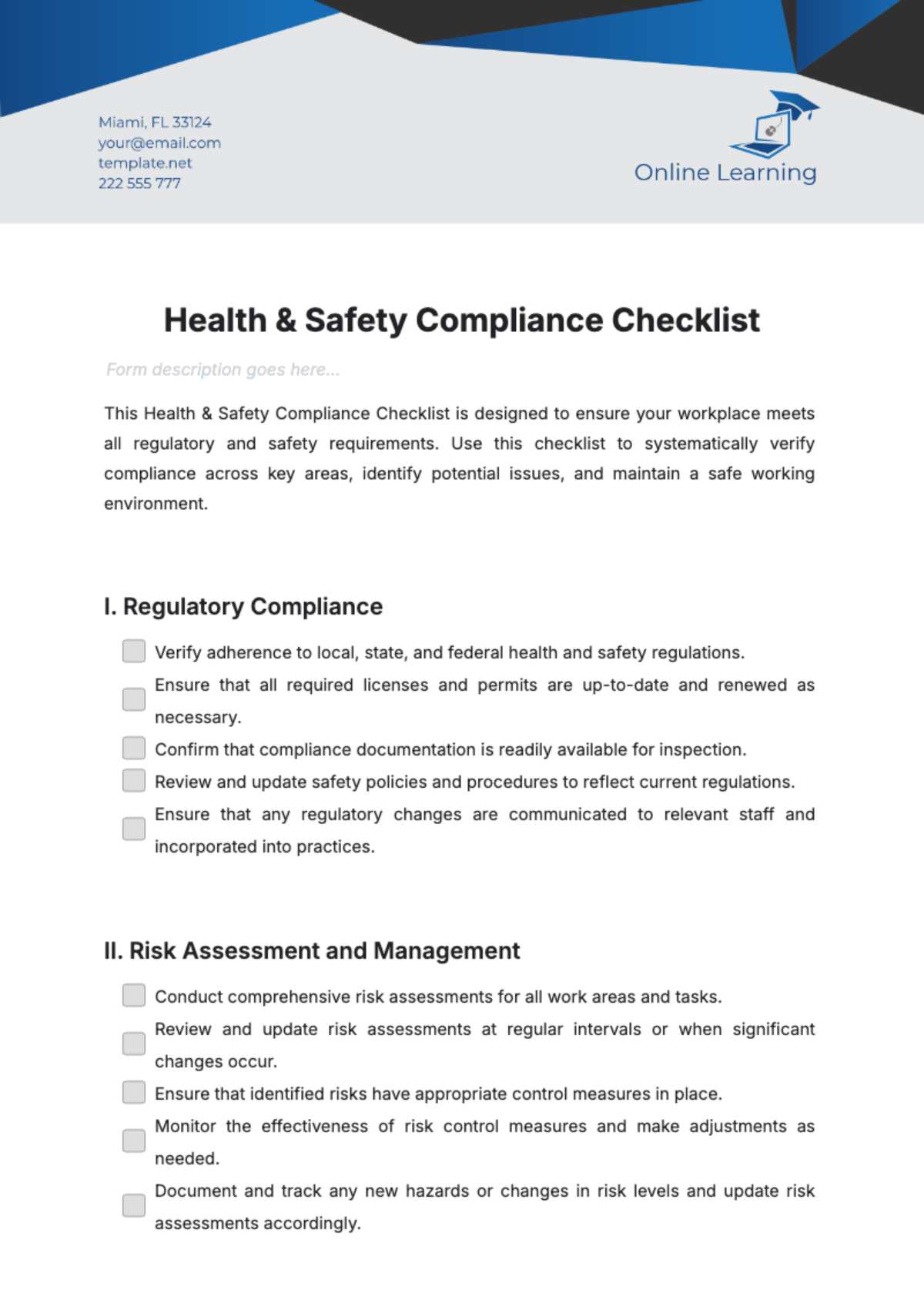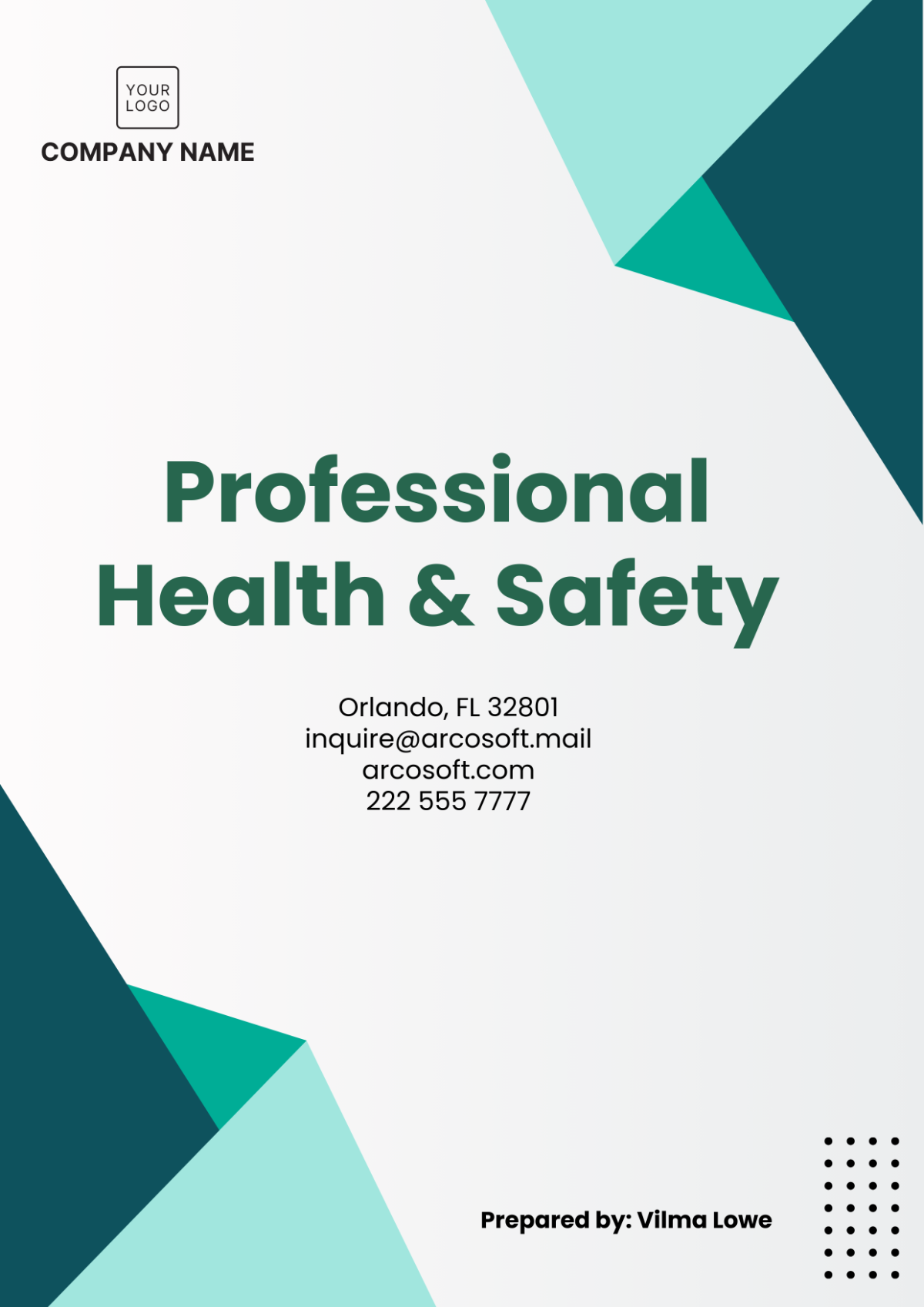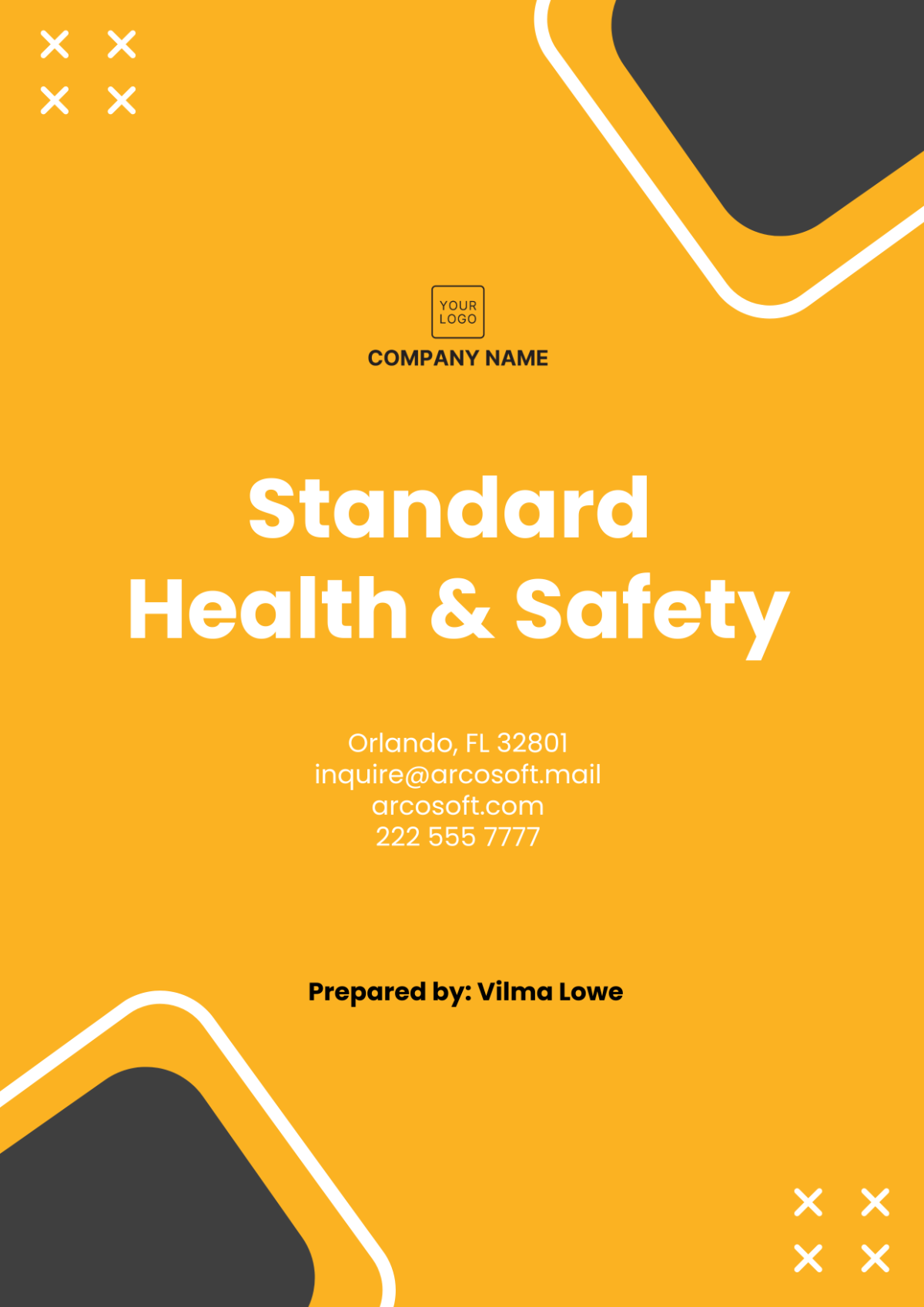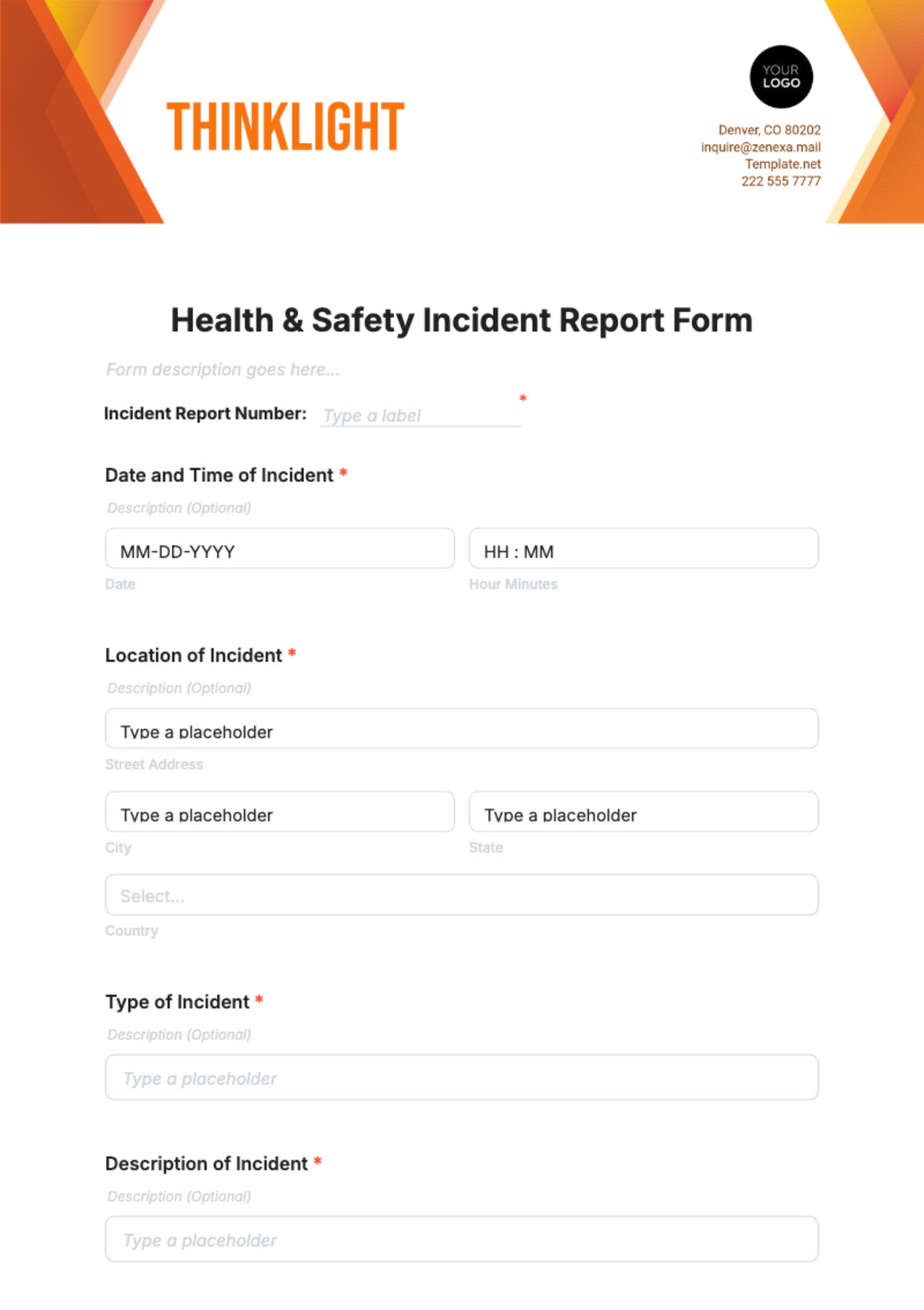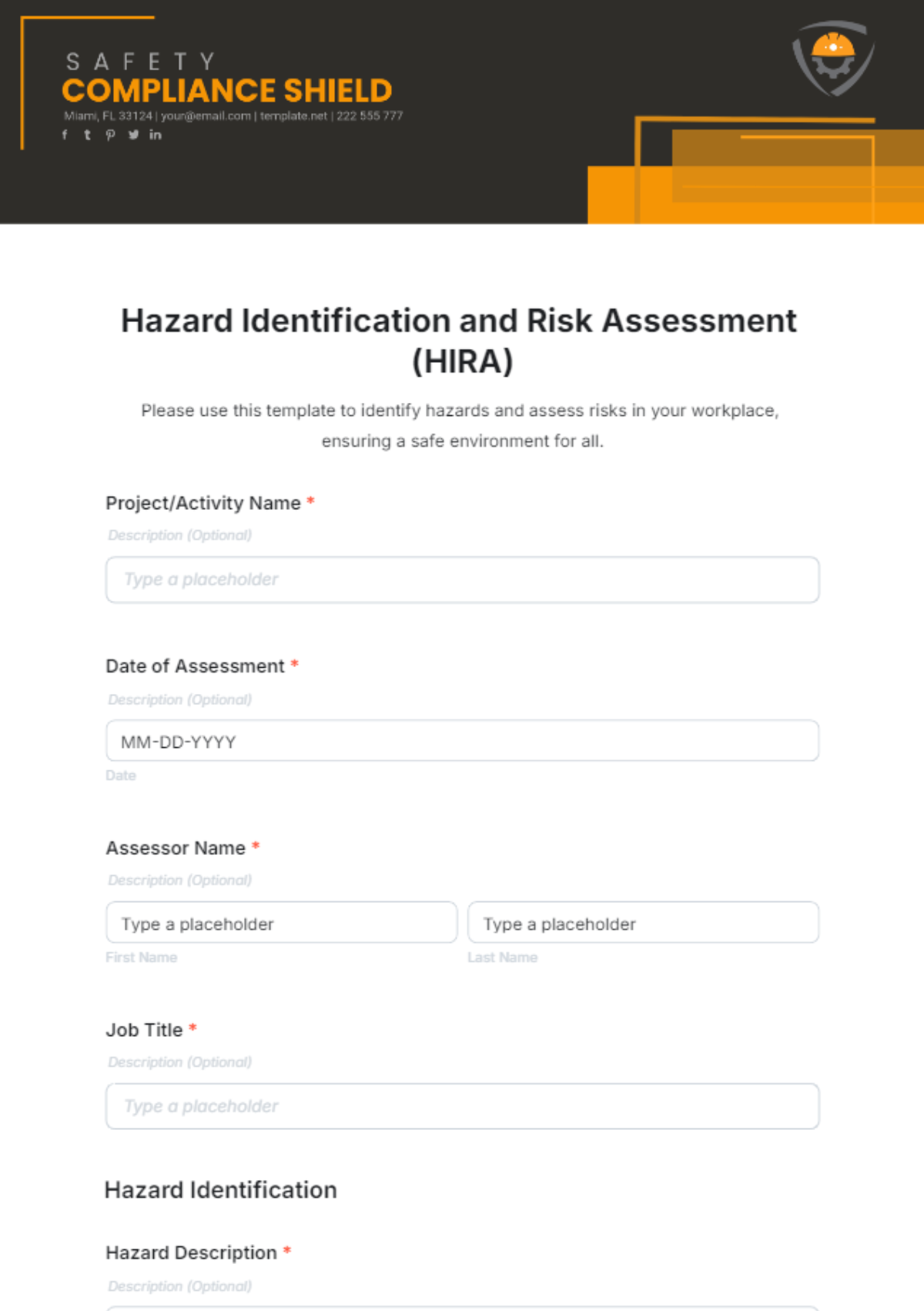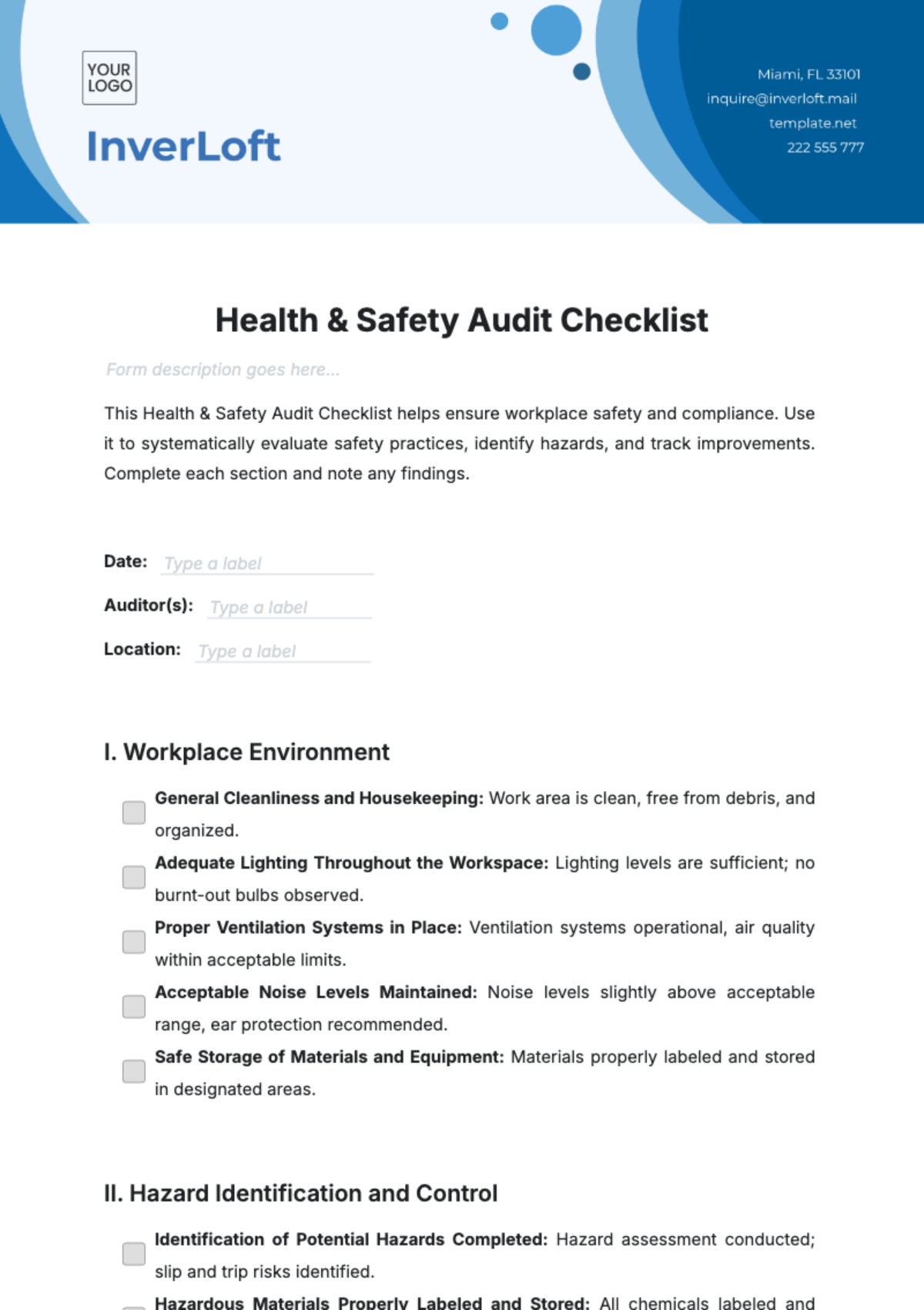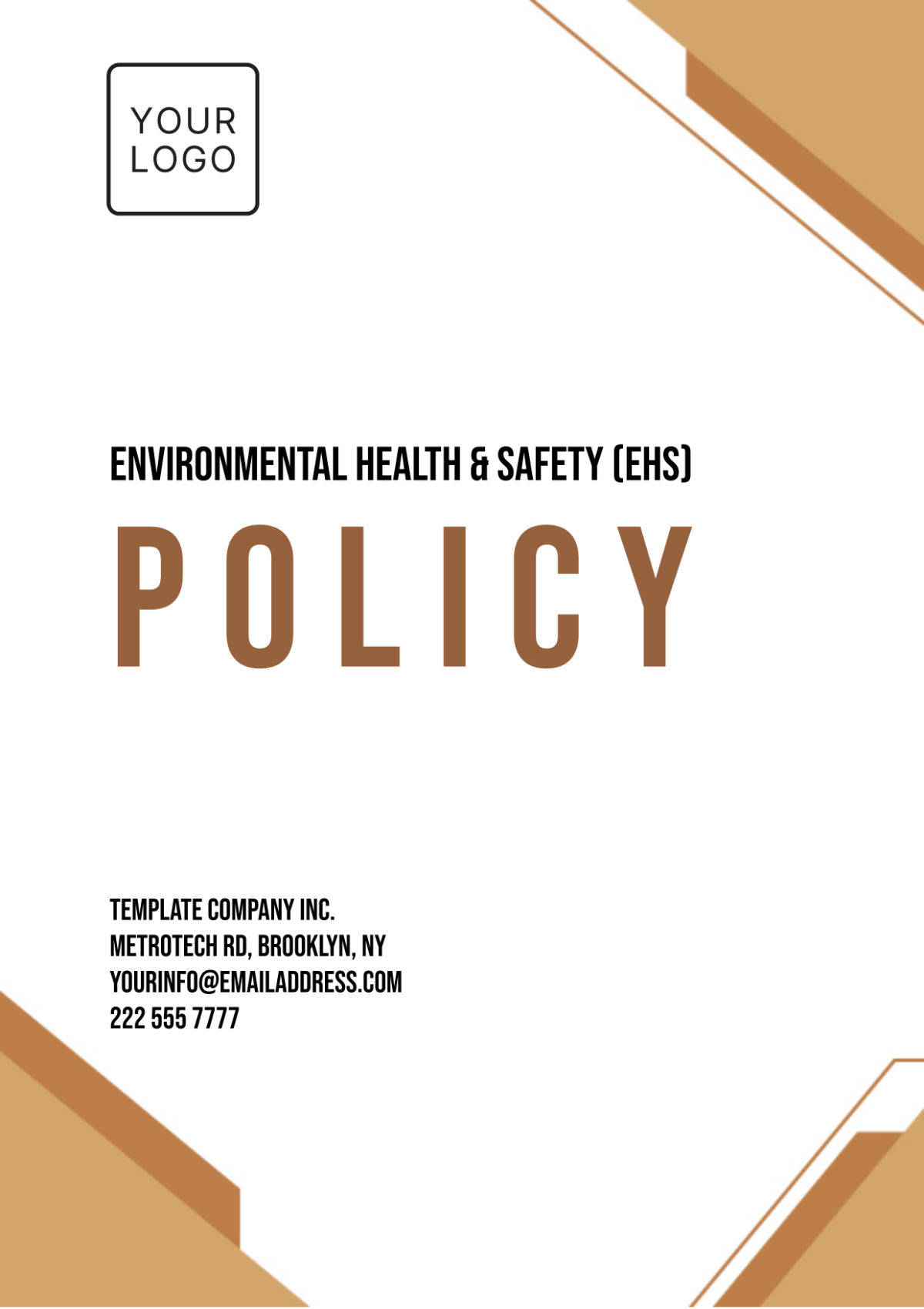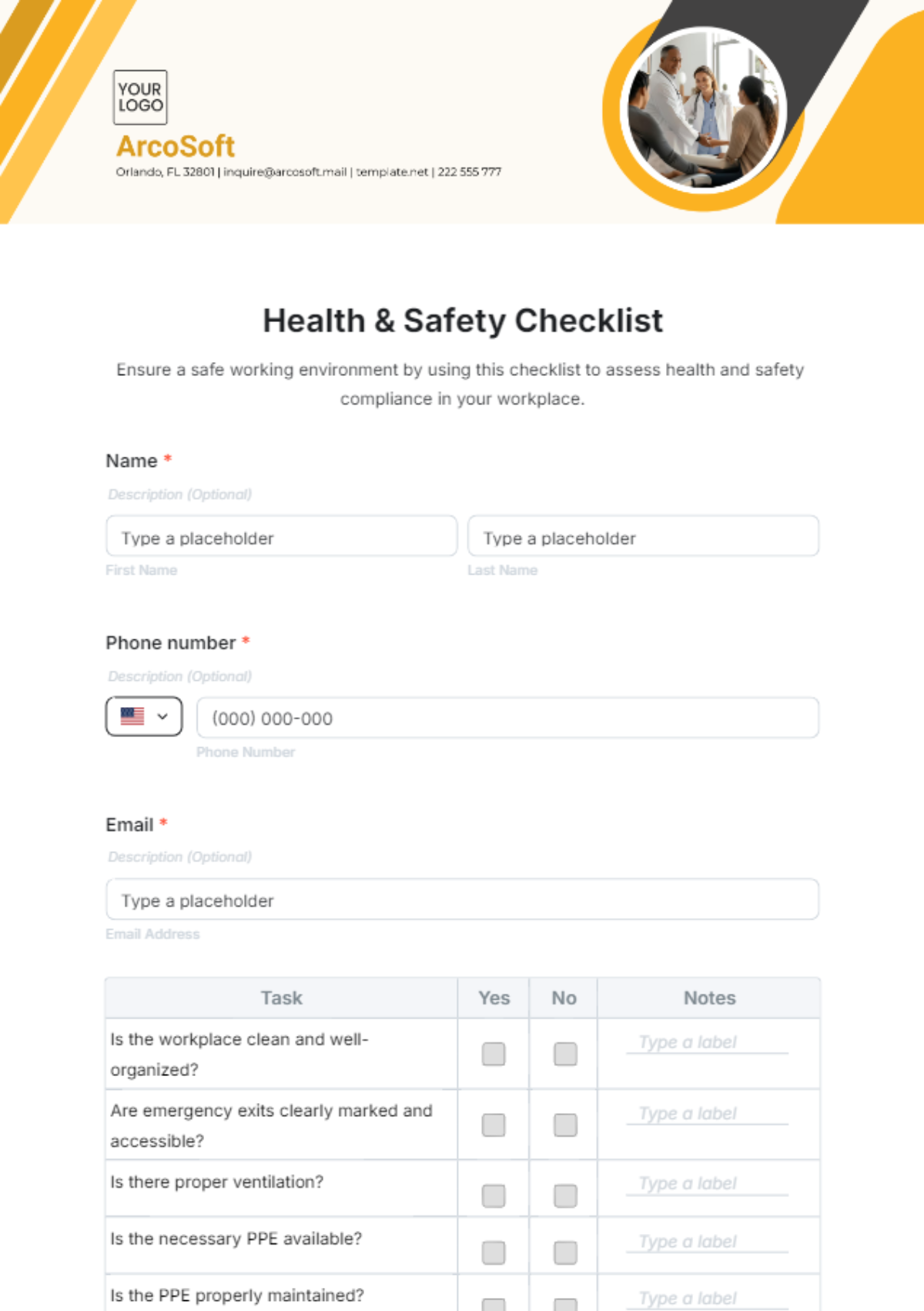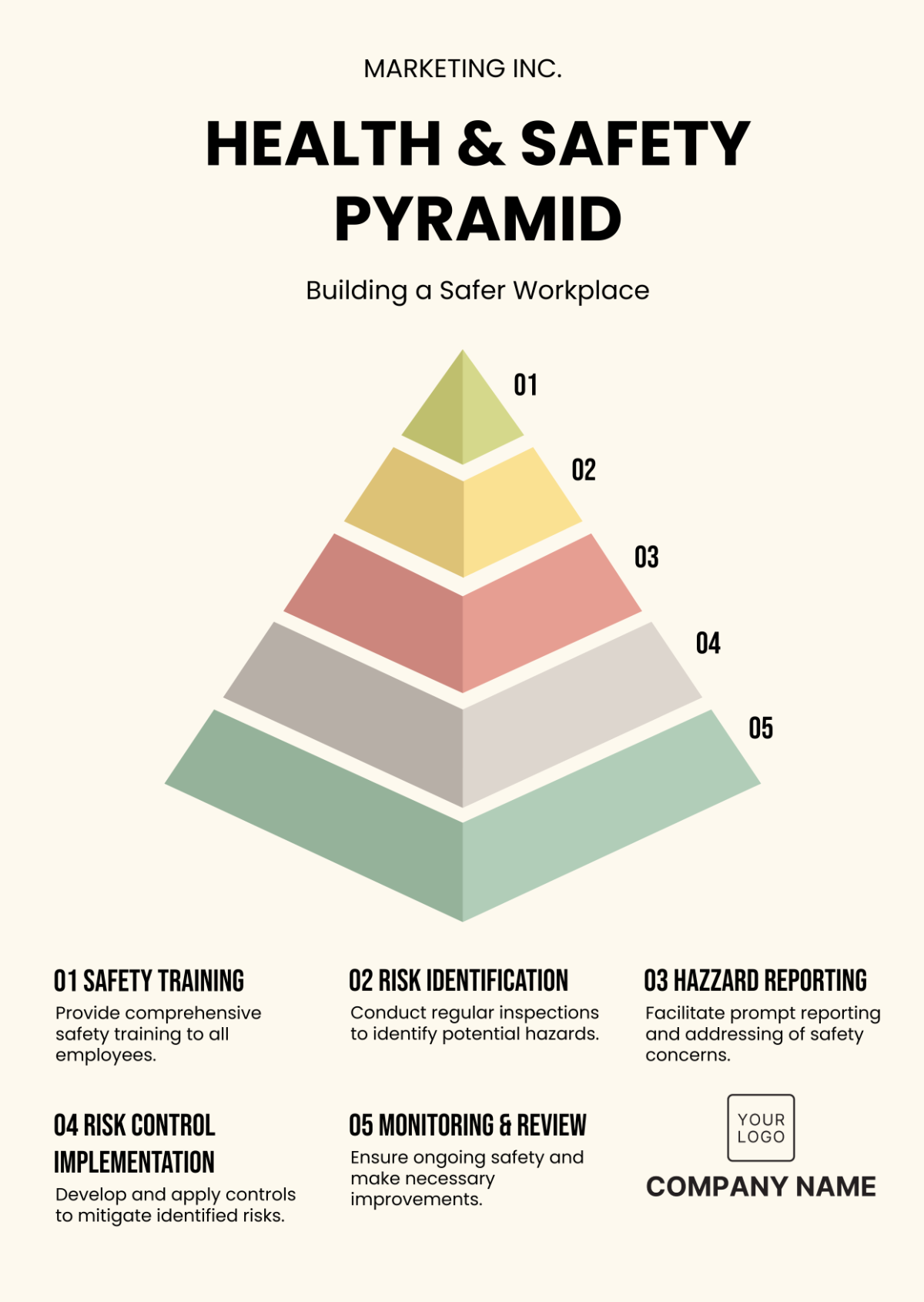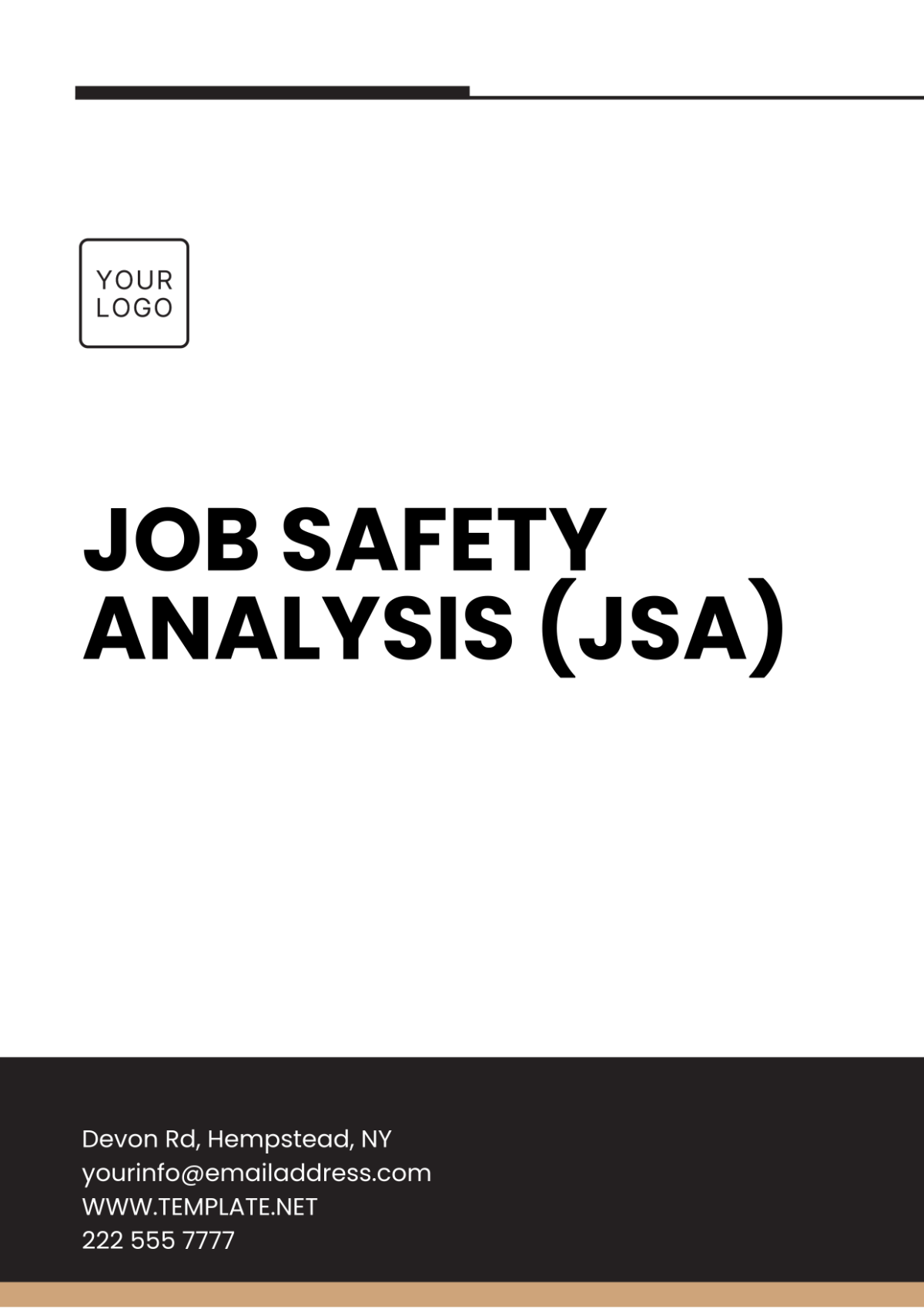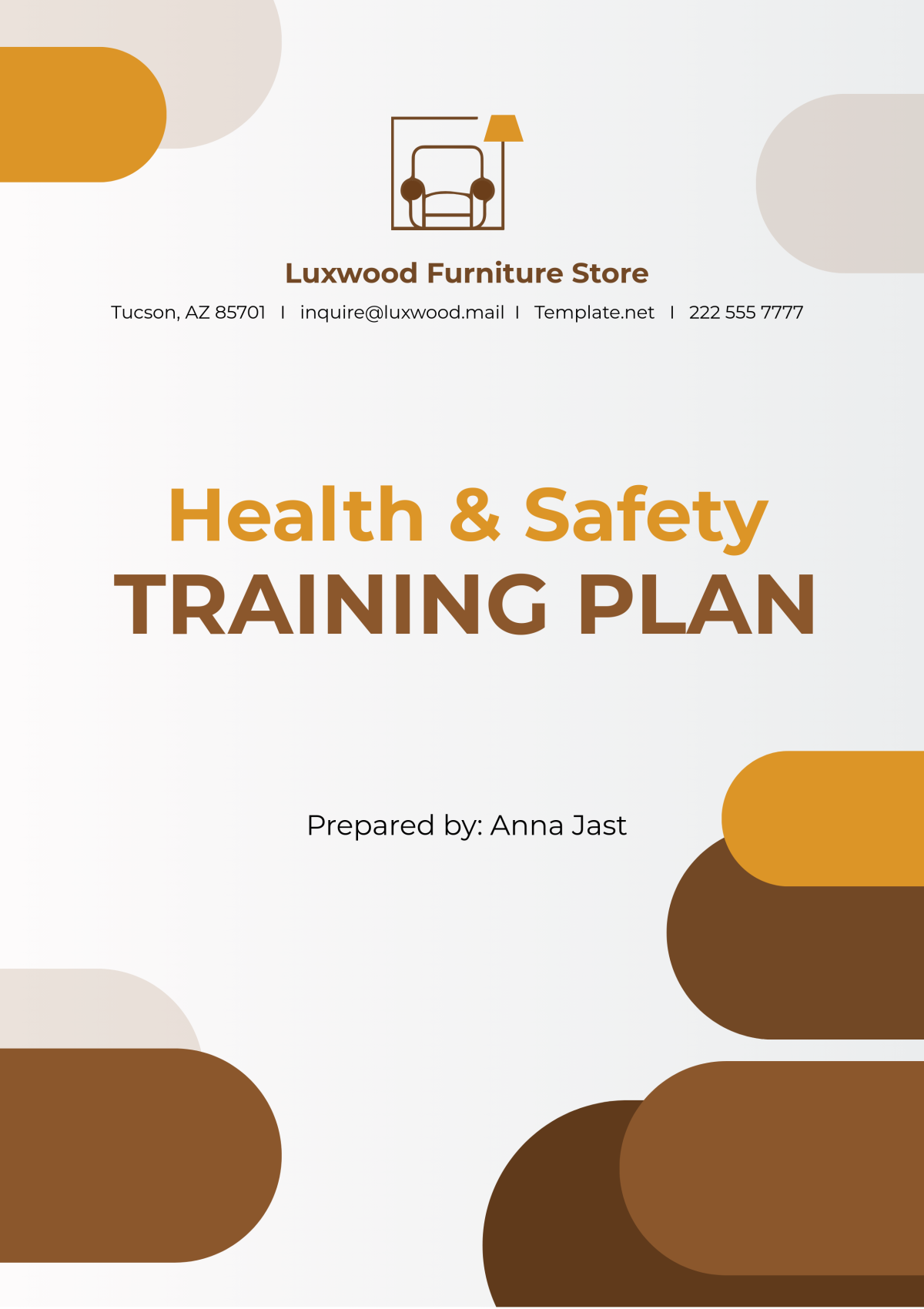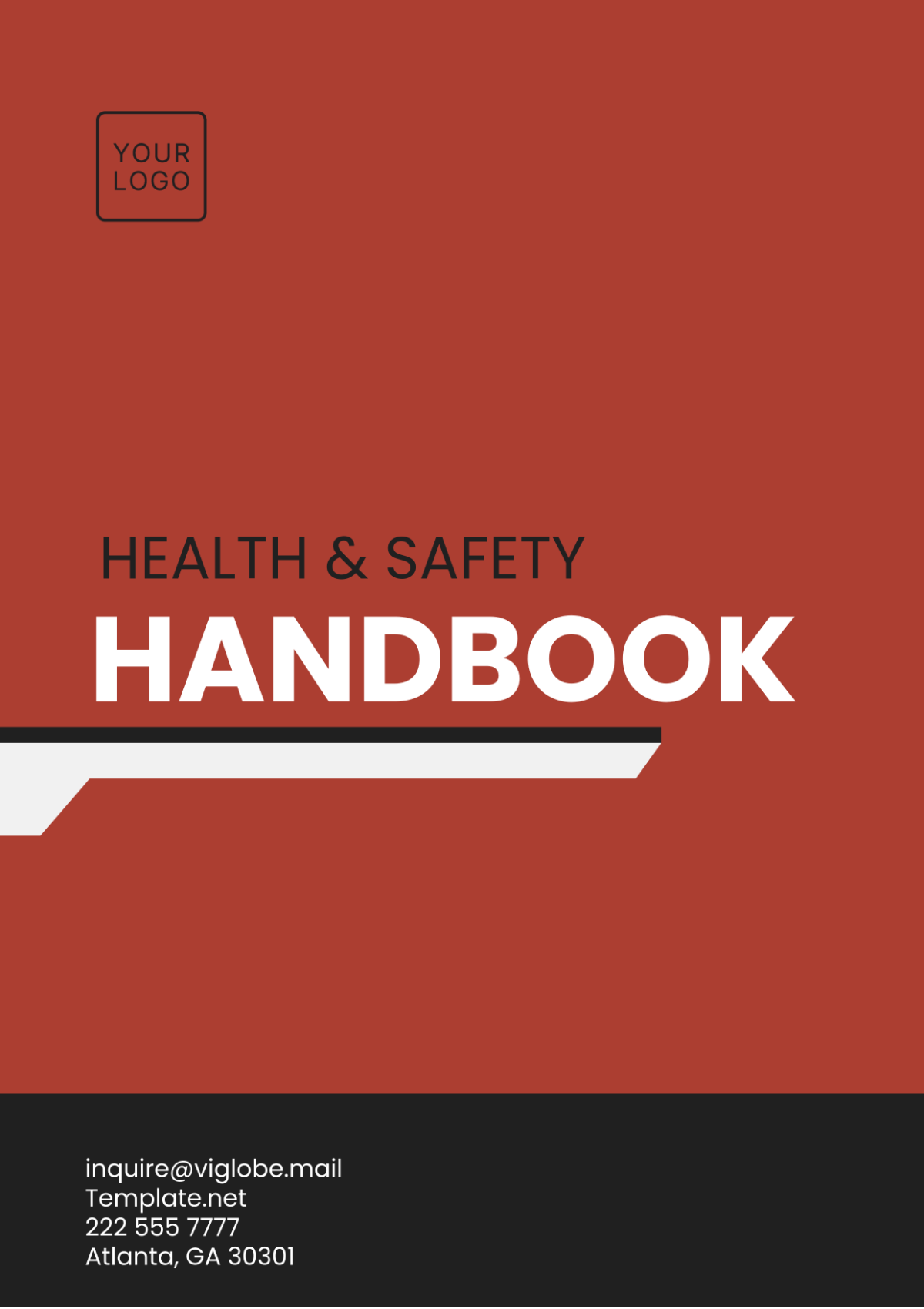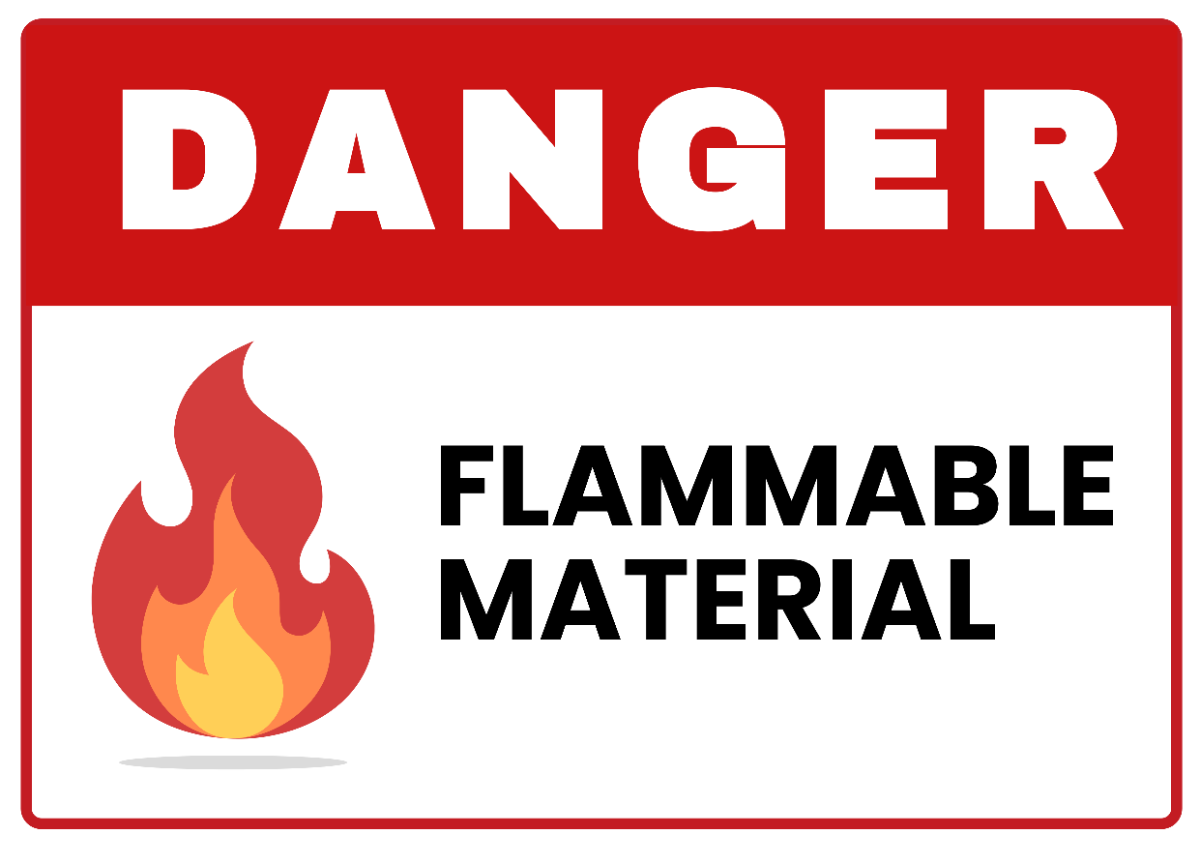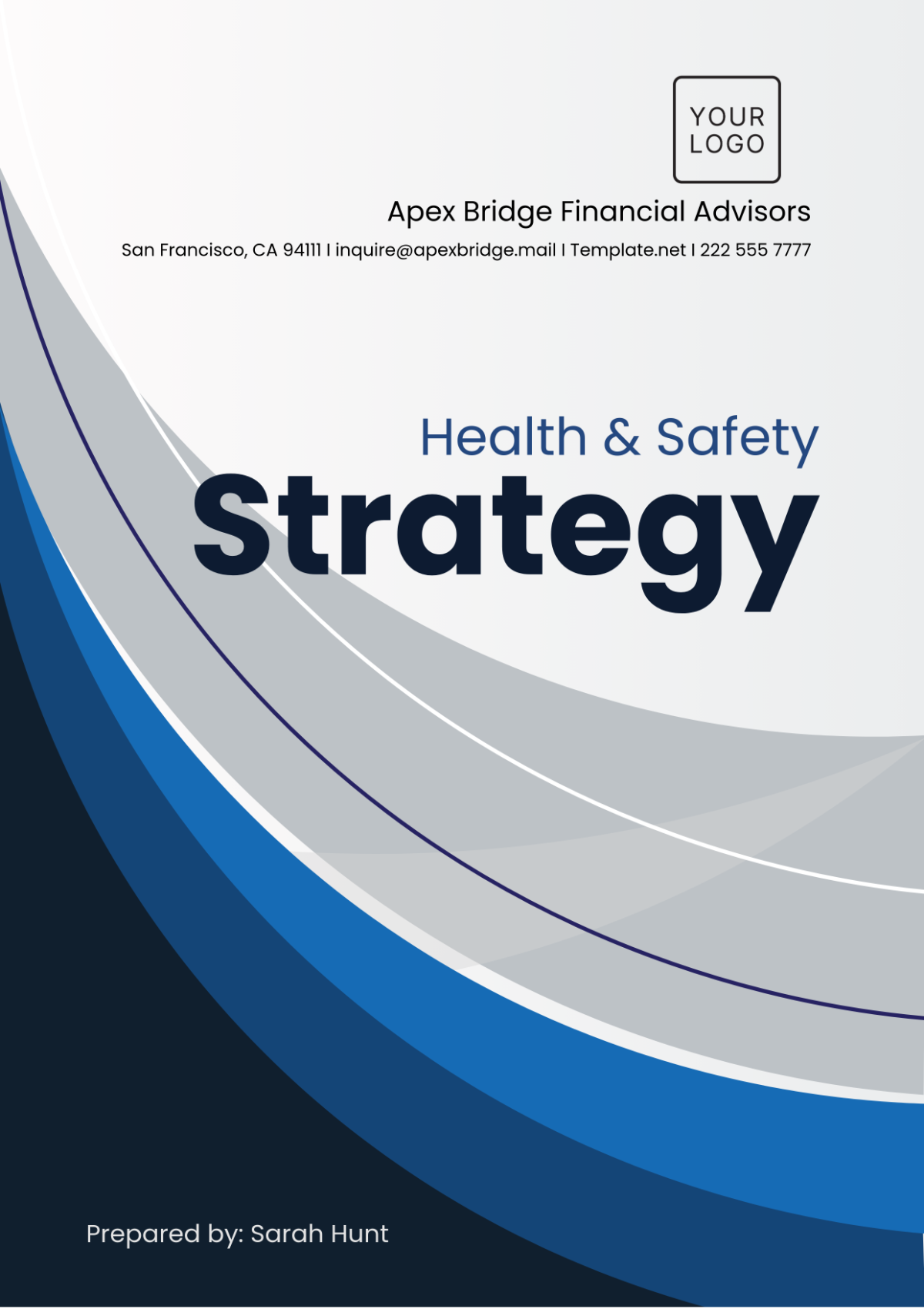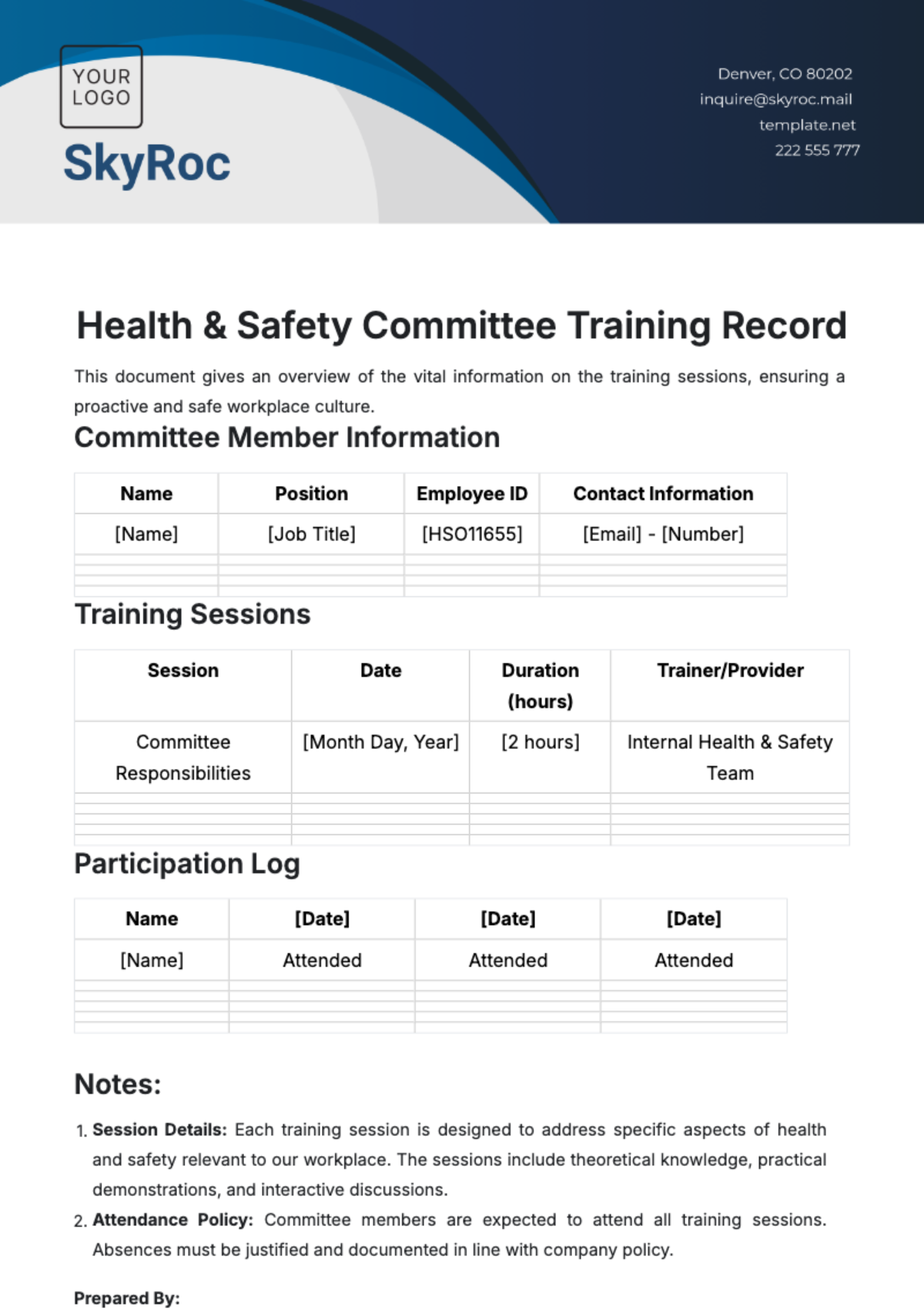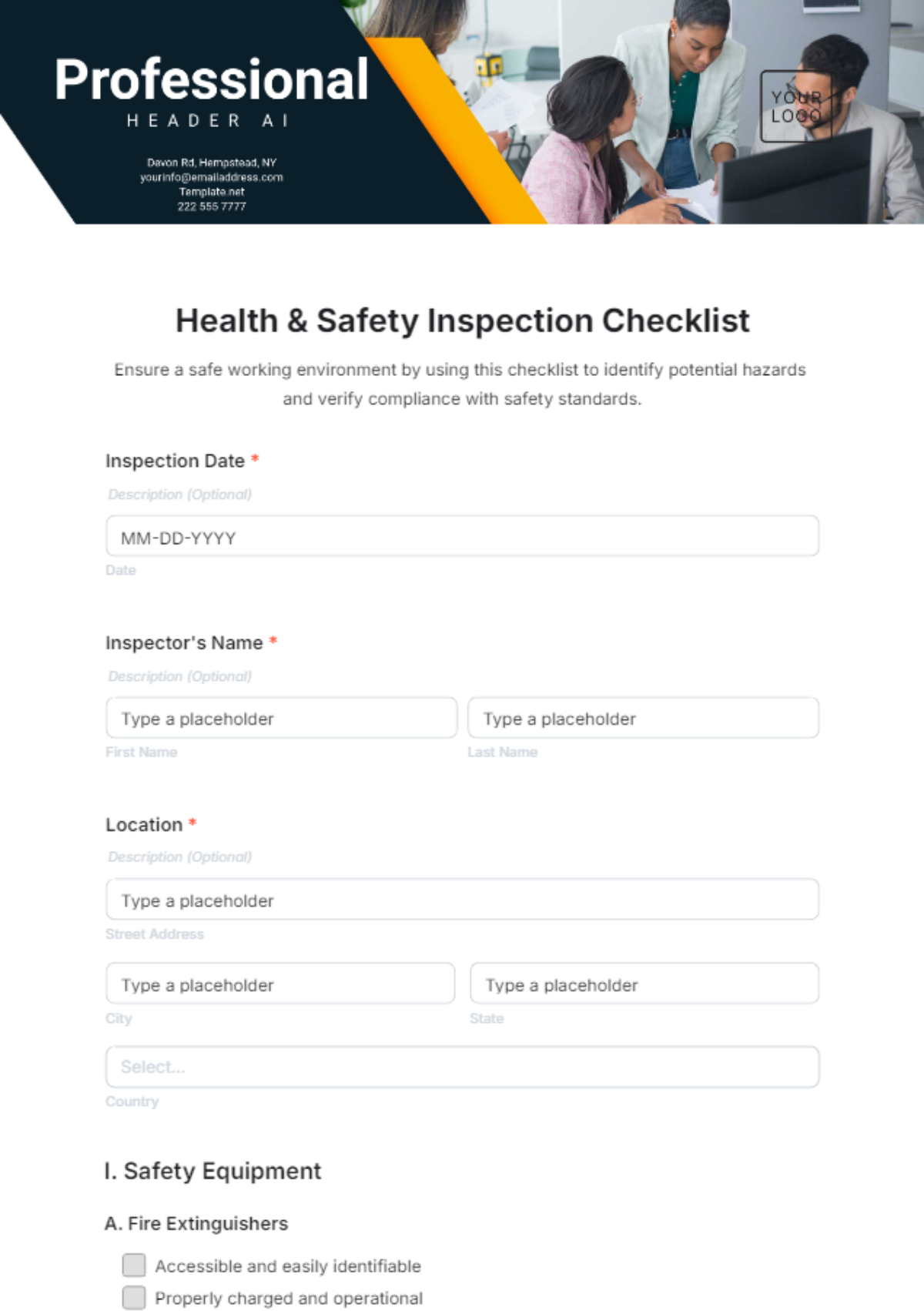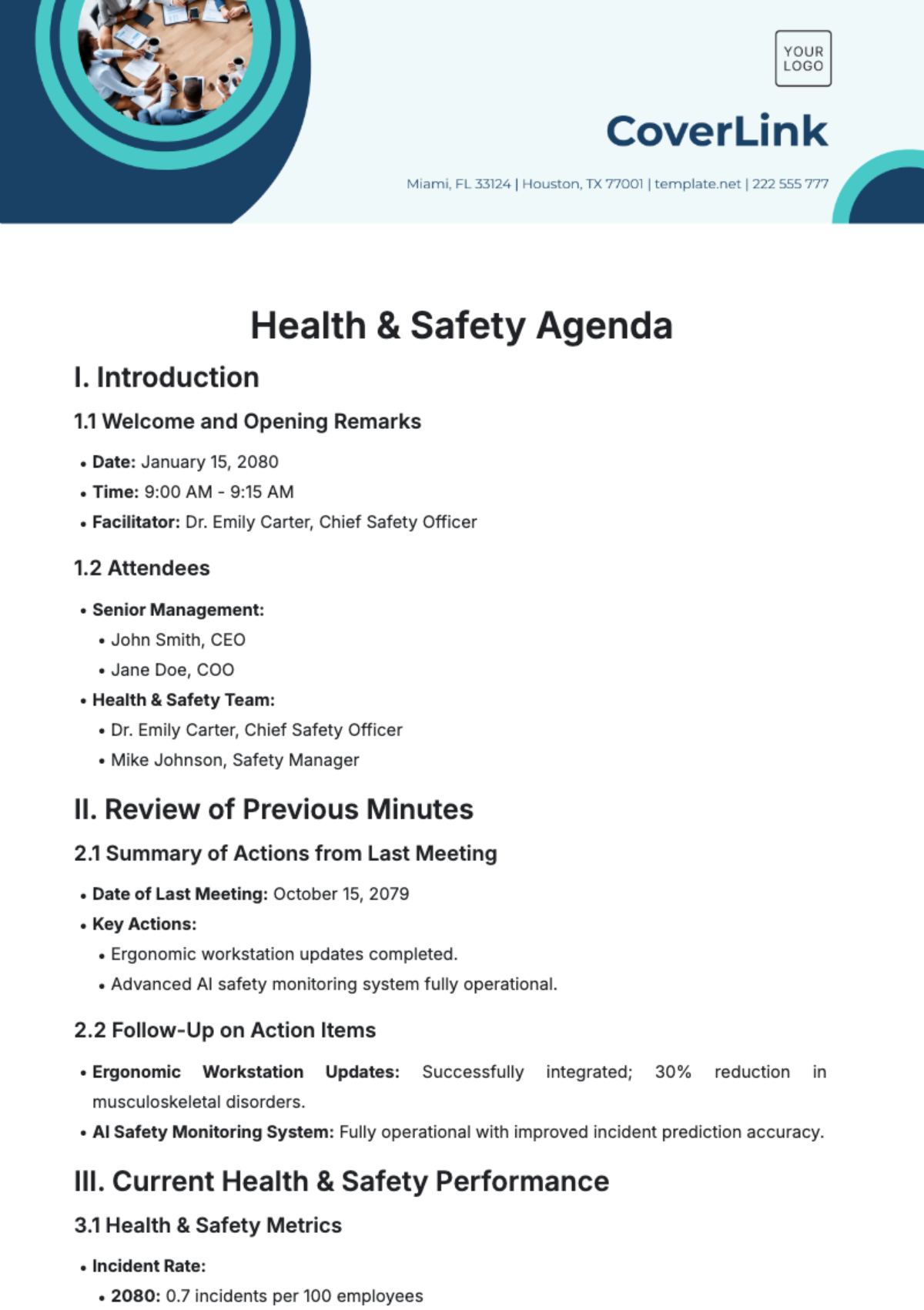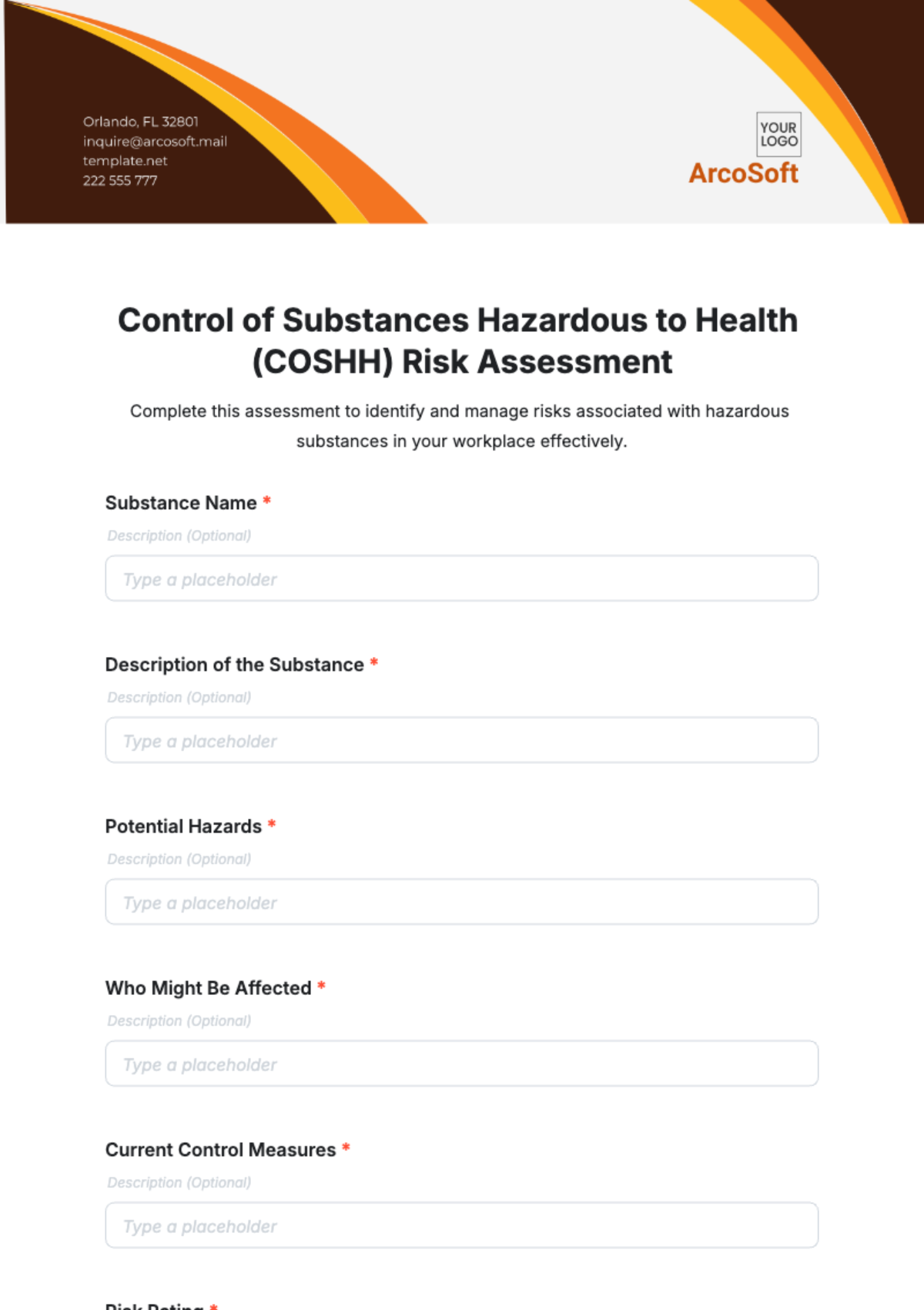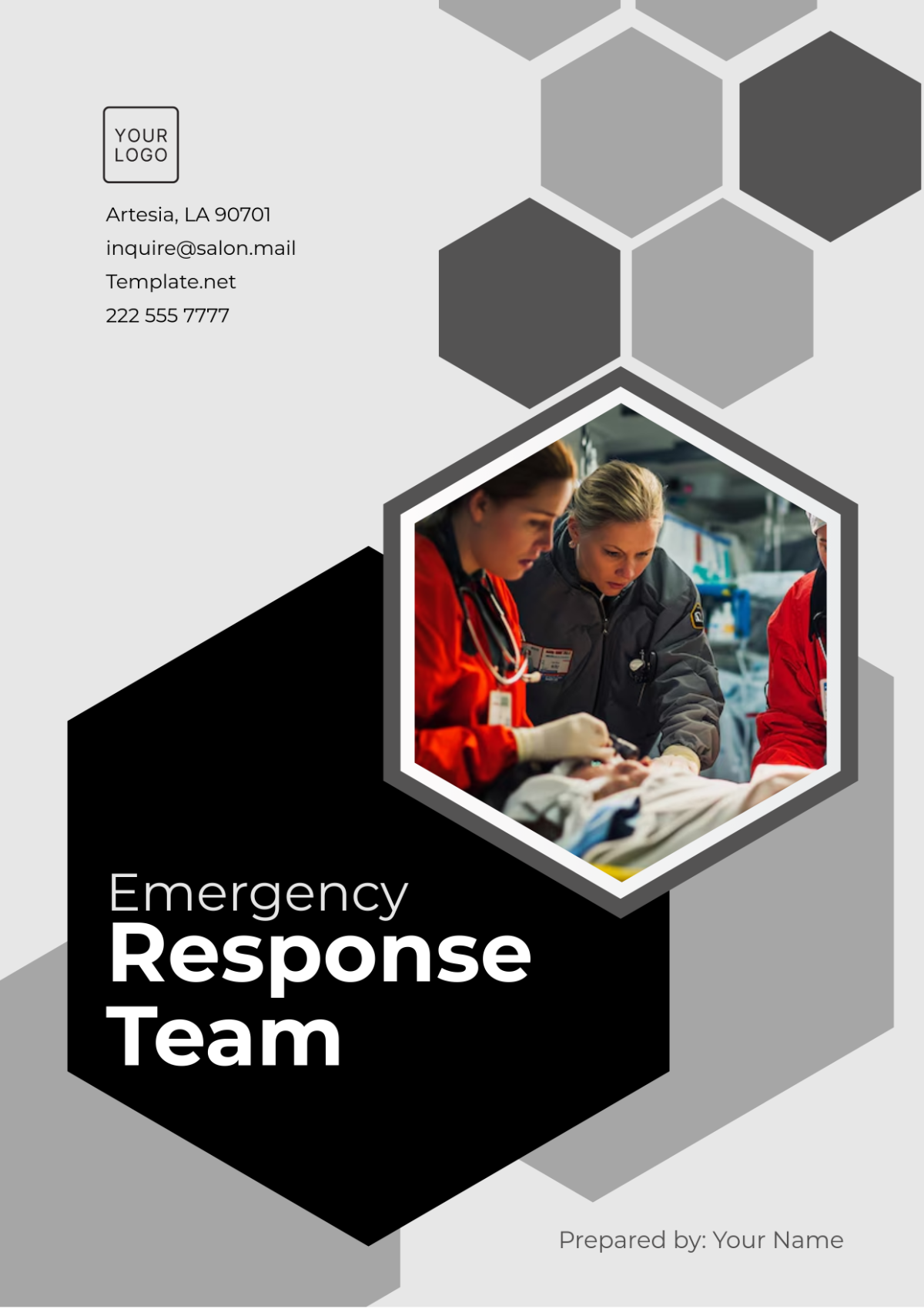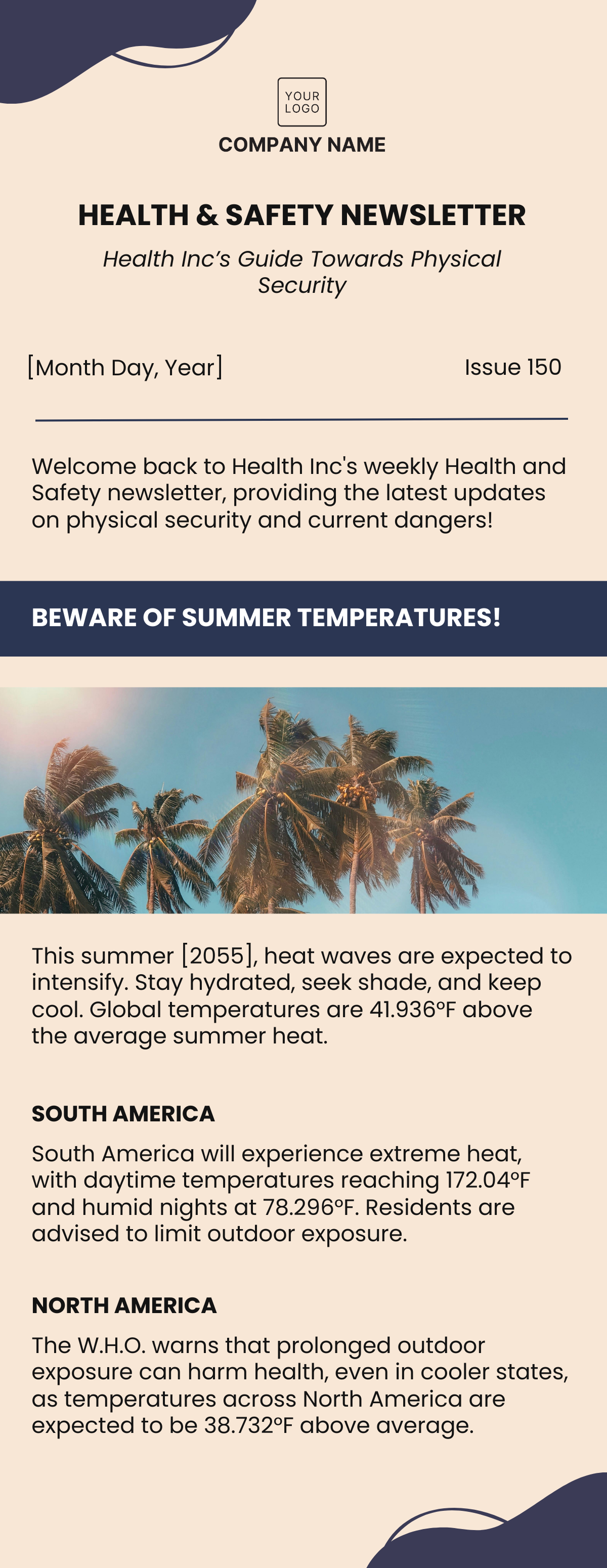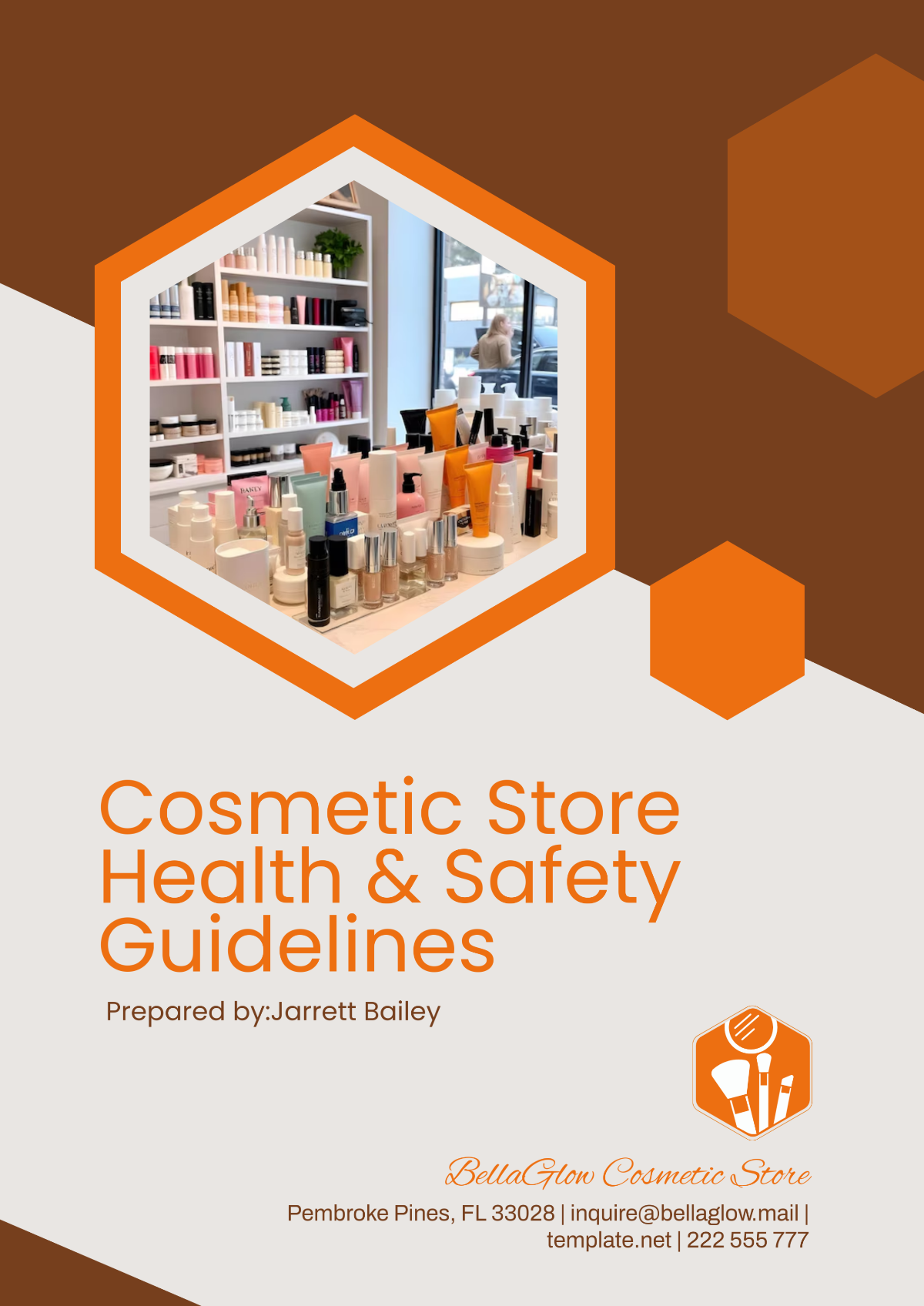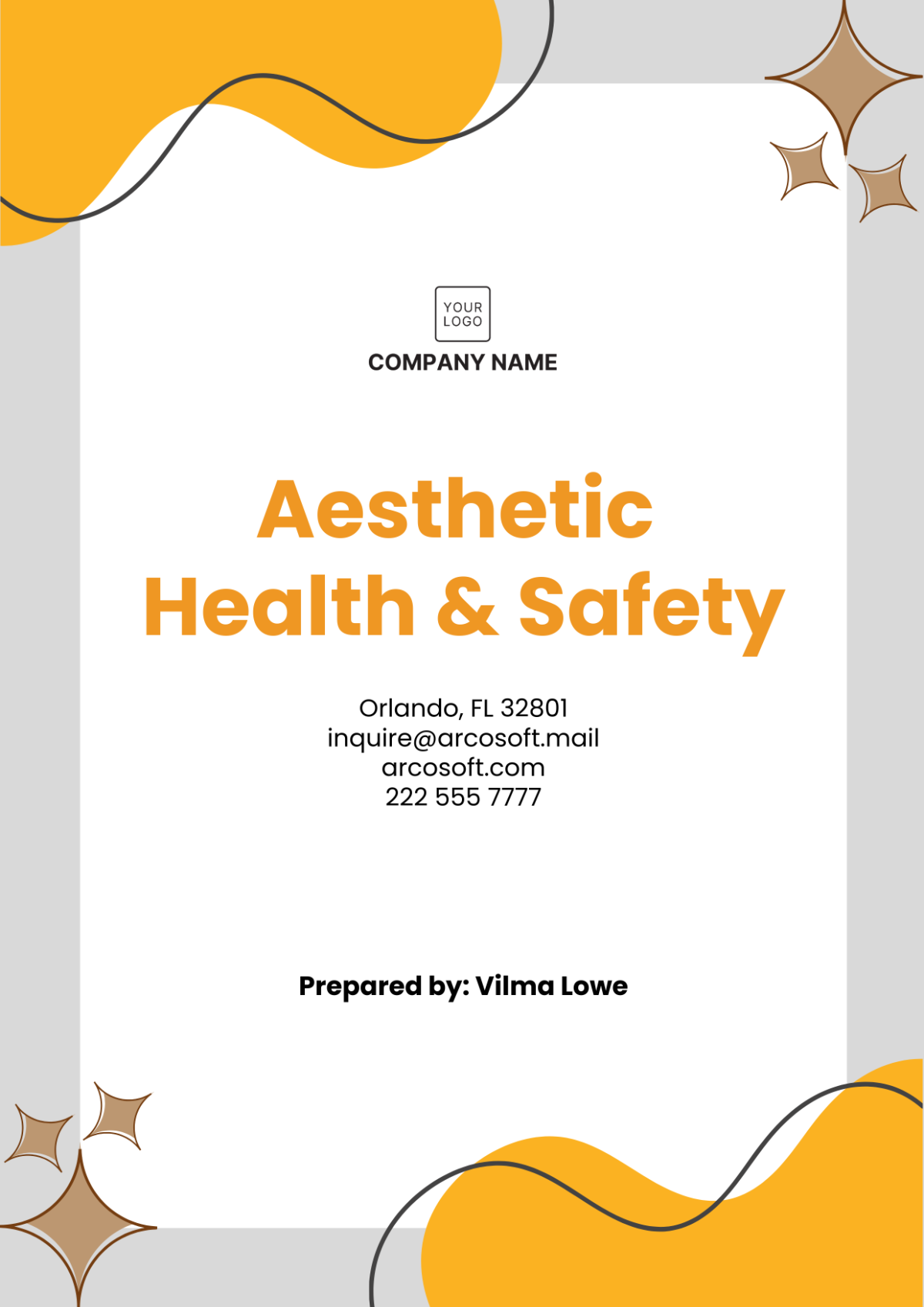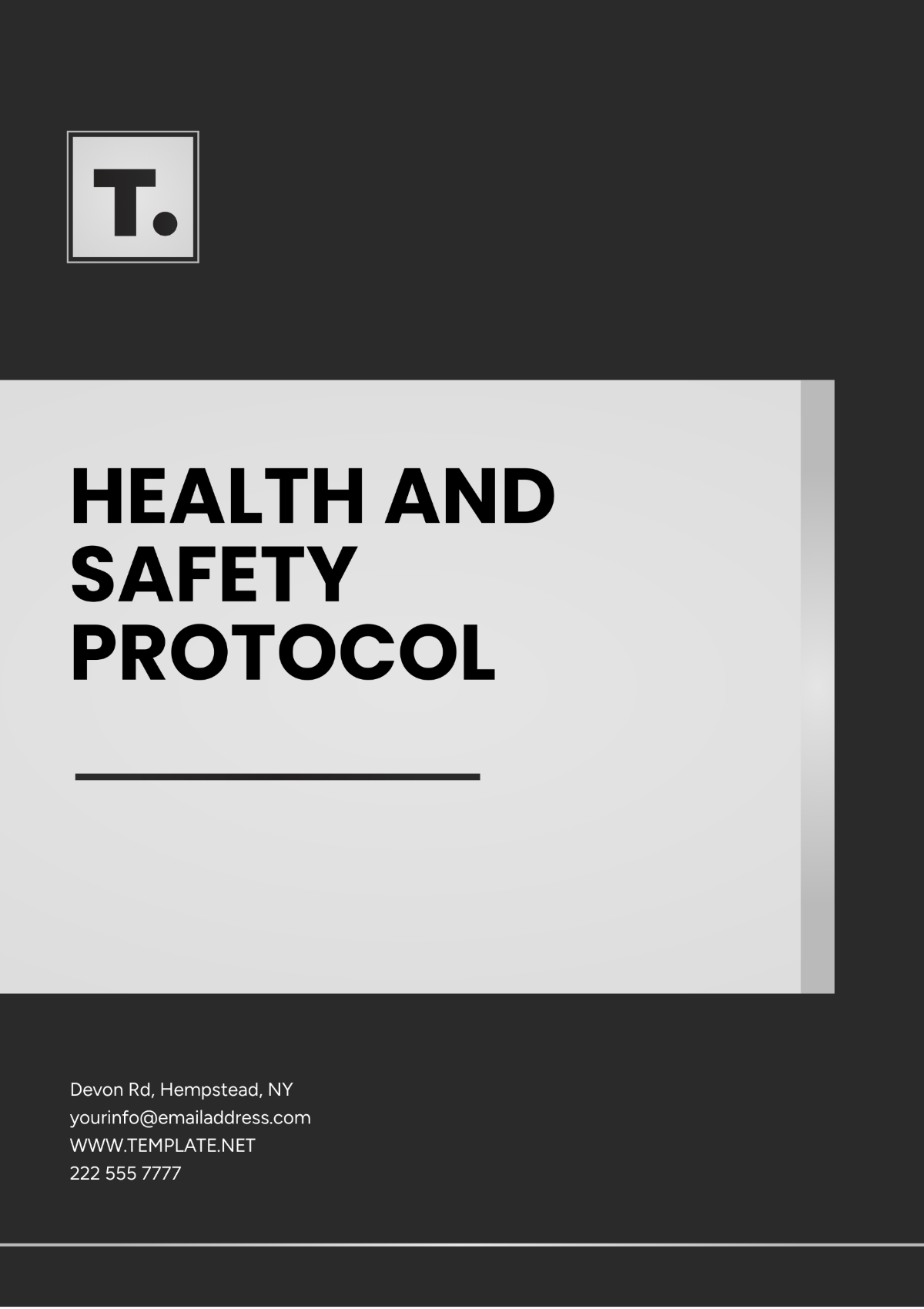Cosmetic Store Health & Safety Guidelines
Effective Date: January 1, 2050
Last Review Date: December 31, 2050
Next Review Date: December 31, 2051
Version: 1.0
This document provides a comprehensive overview of [Your Company Name]'s health and safety policies aimed at ensuring the well-being of all customers, employees, and visitors in our cosmetic retail stores. The guidelines cover a range of procedures related to product safety, hygiene, emergency protocols, and employee welfare. It is the responsibility of everyone associated with [Your Company Name] to adhere to these protocols and contribute to a safe and healthy environment.
I. Overview
At [Your Company Name], we take the health and safety of our customers, employees, and products seriously. In a busy cosmetic store, numerous potential risks could arise, from chemical exposure to physical accidents. Therefore, maintaining a safe environment requires constant vigilance, proper training, and adherence to the outlined health and safety guidelines. This document ensures that safety measures are implemented across all aspects of store operations, from product handling to emergency response.
Primary Objectives:
To establish a comprehensive, proactive approach for the protection and well-being of all individuals on store premises.
To minimize risks associated with the use and distribution of cosmetic products, including hazardous ingredients and unsafe handling practices.
To create a culture of safety that extends to every level of the organization, ensuring accountability and compliance with all regulatory standards.
By following these guidelines, [Your Company Name] aims to foster a safe and healthy environment that promotes customer confidence and employee satisfaction.
II. Responsibilities and Compliance
A. Management Responsibilities
Management Training and Oversight
Managers at [Your Company Name] are responsible for ensuring that all health and safety procedures are followed in the store. This requires ongoing education and training in safety procedures. Managers must complete health and safety training annually and ensure that their teams are up-to-date with the latest safety practices.
Additionally, managers are responsible for conducting monthly reviews to monitor store safety compliance. Regular inspections ensure that the store remains a safe environment for both customers and employees.
In the case of any health or safety incident, managers must immediately investigate and take the appropriate corrective actions. The incident should be documented, and a report must be filed within [24] hours.
Inspections and Reporting
Quarterly inspections of the store will be conducted to evaluate compliance with health and safety standards. A detailed report of the findings will be submitted to the Health & Safety Officer for review.
If a critical safety issue is discovered, it must be addressed immediately. A follow-up report, outlining actions taken to mitigate the issue, must be submitted within [72] hours. This ensures that any risks are promptly neutralized.
Managers are also responsible for making health and safety a part of employee performance assessments. Ensuring employees understand and adhere to these guidelines should be included in their regular reviews.
B. Employee Responsibilities
General Conduct
Employees are expected to maintain a high standard of professional conduct at all times while working at [Your Company Name]. This includes being knowledgeable about the products sold and assisting customers with safety and health-related questions.
Employees are required to wear their uniforms at all times. Uniforms are part of the health and safety guidelines, as they help to identify staff members and present a professional appearance. Additionally, employees must wear name badges that are visible to customers.
Hygiene and Sanitation
Hygiene is a critical aspect of health and safety. Employees must wash their hands regularly, especially after handling cash, before interacting with customers, or after cleaning tasks. It is mandatory to wash hands for at least [20] seconds using soap and water.
Personal protective equipment (PPE), such as gloves, must be worn during tasks that involve direct product handling. This includes restocking shelves, interacting with testers, and when applying products for customers.
Employees must change gloves regularly and after handling different products. Failure to follow these procedures may increase the risk of cross-contamination.
Training Requirements
All new employees will undergo mandatory health and safety training within their first [7] days of employment. Training will cover topics such as product handling, emergency protocols, and proper hygiene practices.
To ensure continuous safety awareness, employees will be required to participate in refresher training every [6] months. This training will cover updated procedures, including any new safety products, chemicals, or changes in legislation. Employees must demonstrate their understanding by completing an evaluation at the end of each training session.
III. Health and Safety Policies
A. Hygiene and Cleanliness
1. Personal Hygiene Standards
Employee Hygiene: Employees at [Your Company Name] are required to maintain high standards of personal hygiene. This includes regular handwashing and avoiding touching the face. Staff members must also ensure that their nails are clean and trimmed.
Uniform Maintenance: Uniforms must be kept clean and free of any stains or visible dirt. Employees are expected to launder their uniforms before each shift to present themselves in a professional manner. Any uniforms that become damaged or worn must be replaced immediately to maintain the store’s standards.
2. Cleaning Protocols
Store-Wide Cleaning: To ensure the store remains safe and clean for both employees and customers, all areas, including floors, shelves, and counters, must be sanitized regularly. This includes disinfecting surfaces such as counters after each customer interaction, especially during peak hours.
Specific Cleaning Schedule:
Floors will be mopped twice daily—once in the morning and once at the close of business.
Shelves and product displays should be wiped down with antibacterial wipes every [2] hours, and any surfaces that are frequently touched, such as door handles, must be disinfected every [30] minutes during operating hours.
Bathrooms must be cleaned and disinfected every [4] hours to maintain hygiene for both customers and staff.
Cleaning Area | Frequency | Cleaning Product |
|---|---|---|
Floors | Twice a day | Approved Cleaner |
Counters | After each customer | Disinfectant Wipes |
Product Shelves | Every 2 hours | Antibacterial Solution |
Bathrooms | Every 4 hours | Hospital-grade Disinfectant |
3. Product Sampling Procedures
Single-use Samples: The use of single-use applicators is mandatory when customers want to sample products. This prevents contamination and ensures that only one customer is exposed to the product at a time.
Sanitization of Testers: All testers (lipsticks, mascaras, foundations, etc.) must be sanitized with an alcohol-based solution immediately after each use. Staff must also change gloves before handling a new customer.
B. Product Safety
1. Handling and Storage
Proper Storage Conditions: All products must be stored in accordance with their manufacturer’s specifications. For example, products with active ingredients should be stored in a cool, dry place to preserve their effectiveness and prevent degradation.
Inventory Checks: Regular checks must be performed to ensure that all products are within their expiration dates. This helps ensure that expired or damaged products are removed from the shelves in a timely manner, reducing the risk of customer harm. A monthly inventory check will be conducted to remove any expired products from the retail space and replace them with fresh stock.
2. Disposal of Expired or Damaged Products
Immediate Removal: Expired products must be removed immediately from the shelves to prevent accidental sales. Employees must document and discard these products in accordance with the company’s disposal protocol.
Disposal Reports: Every instance of product disposal—whether due to expiration, damage, or safety concerns—must be recorded. This report helps track inventory issues and provides documentation for audits. Damaged goods should also be removed from the sales floor to prevent confusion or potential harm to customers.
3. Ingredient Transparency
Allergen Information: To protect customers with allergies, every product sold in-store must have its ingredient list clearly displayed. Special care must be taken for products that contain common allergens like nuts, gluten, dairy, or artificial fragrances.
Customer Communication: Staff must be trained to assist customers in identifying products that could trigger an allergic reaction. If a customer is unsure about a product, the employee should advise them to conduct a patch test or consult the ingredient list.
IV. Emergency Preparedness and Response
A. Emergency Training
1. Fire Safety
Regular Fire Drills: To ensure that all staff members are prepared for an emergency, fire drills are held twice a year. This ensures that employees are familiar with the store’s fire evacuation plan and can respond efficiently.
Evacuation Routes: Clear signage must indicate emergency exits, and evacuation routes must be kept free of obstacles. Employees should be able to guide customers to safety in the event of an evacuation.
Drill Type | Frequency | Participants |
|---|---|---|
Fire Drill | Twice a year | All staff |
First Aid Drill | Annually | Designated staff |
Chemical Spill Drill | Annually | Staff handling chemicals |
2. First Aid and Medical Emergencies
First Aid Kits: The store should be equipped with fully stocked first aid kits. These kits must be easily accessible to all employees, located near high-traffic areas such as the back office or employee break room.
Medical Assistance: In case of a more serious injury or medical emergency, the employee should immediately contact emergency services at [911]. Employees should have a basic understanding of CPR and other first aid protocols.
V. Additional Safety Considerations
A. Electrical and Equipment Safety
Safe Use of Electrical Equipment
Electrical equipment in the store, such as lighting, registers, and other machinery, must be inspected regularly to ensure it is safe for use. All electrical systems must comply with national safety standards to prevent potential hazards such as electrical fires or malfunctions.
Employees must be trained on the proper use of electrical equipment, including how to turn off and safely use machines when necessary. For example, when using cash registers, staff should be cautious of electrical cords to avoid tripping hazards, and ensure cords are not frayed or exposed.
Equipment Maintenance and Inspection
All equipment in the store, such as fans, hairdryers, and any electrical testers, should be regularly serviced and checked for safety. Maintenance logs must be kept to document any issues, repairs, or upgrades made to the equipment.
Any electrical equipment that shows signs of wear or malfunctions should be immediately taken out of use until it is repaired or replaced. This includes replacing damaged cords, fixing loose plugs, and ensuring that no electrical hazards exist in customer-facing areas.
B. Handling of Hazardous Substances
Chemical Storage and Handling
[Your Company Name] stores various cosmetic products that may contain hazardous chemicals, such as perfumes, dyes, and strong cleaning agents. It is essential that all hazardous substances are stored in compliance with safety standards, including proper labeling and restricted access.
All chemical products, including cleaning agents and industrial supplies used in the store, must be stored in secure areas. These chemicals should never be left out in open areas where employees or customers could inadvertently come into contact with them.
Personal Protective Equipment (PPE)
Employees handling hazardous chemicals should always wear appropriate PPE, such as gloves, aprons, and safety goggles. If a spill occurs, employees must know how to respond, including how to properly clean and dispose of hazardous materials.
The store must provide easily accessible PPE to employees working with potentially hazardous products. Additionally, employees must be trained on how to use and maintain PPE. All used PPE must be disposed of safely, and employees should replace equipment as necessary to ensure it is in good condition.
Handling Chemical Spills
In the event of a chemical spill, employees must immediately notify a manager and initiate the emergency response plan. This includes containing the spill and preventing it from spreading to other areas of the store.
A chemical spill kit should be readily available in areas where chemicals are commonly used or stored. Employees should be trained in how to use the spill kit, which should include absorbent materials, neutralizing agents, and instructions on how to dispose of the contaminated materials.
All spills must be documented, including the type of chemical, the location, and the action taken. An investigation should follow to assess the cause and prevent future incidents.
VI. Safety and Security for Customers
A. Store Layout and Customer Movement
Clear Aisles and Safety Signage
A primary concern for customer safety is ensuring that aisles and walkways remain clear of obstacles. All aisles should be wide enough for easy movement, and no items should be left in walkways where customers could trip or be injured.
Proper signage should be displayed to indicate any potential hazards such as wet floors, low-hanging objects, or areas where customers may need to exercise caution. If a product display or section requires special attention, a warning sign should be posted to alert customers to potential risks.
Emergency Evacuation Plans for Customers
In the event of an emergency, it is essential that customers are evacuated swiftly and safely. The store will have visible evacuation maps located throughout the retail space, clearly marked with emergency exits and routes.
Employees must be trained to direct customers to safety quickly and efficiently. In the event of a fire or other evacuation need, the designated staff members will guide customers to the nearest exit. The evacuation process should be practiced regularly through scheduled fire drills, with feedback provided to improve evacuation efficiency.
B. Protecting Sensitive Customer Information
Data Protection Measures
[Your Company Name] is committed to maintaining the privacy of customers' personal data. This includes information such as names, phone numbers, addresses, and payment details, which are collected during transactions or membership registration.
To protect this sensitive information, all transaction systems, including registers and payment terminals, must comply with the latest security standards (e.g., Payment Card Industry Data Security Standard – PCI DSS).
Employee access to customer data must be limited based on job function. Only those who require access to personal data to perform their duties will be authorized. Any access to sensitive customer information must be logged, and any unauthorized access will be immediately investigated.
Customer Privacy at Testing Stations
The store will ensure that customers' privacy is maintained when using product testers. If customers wish to try a product privately, employees should offer a private testing station or assist them in a secluded area of the store.
Additionally, when customers are engaged in personal beauty consultations or makeovers, their consent must be obtained beforehand, ensuring that they are comfortable with the process and aware of any applicable safety procedures.
VII. Employee Wellness and Support
A. Mental and Emotional Health Support
Supportive Work Environment
[Your Company Name] believes that mental health is just as important as physical health, and it is committed to offering resources to help employees cope with the pressures of retail work. A supportive and understanding environment is crucial to reduce stress, anxiety, and burnout.
Employees who experience mental health issues, whether work-related or personal, are encouraged to seek help. The company will provide access to counseling services and mental health support through employee assistance programs (EAPs).
A confidential platform will be available for employees to report any workplace stressors, and management will follow up with personalized support where necessary.
Stress Management Training
To assist employees in managing stress, [Your Company Name] will provide access to stress management programs. These will include workshops on mindfulness, relaxation techniques, time management, and effective communication.
Employees will also have access to designated quiet rooms during breaks, where they can retreat to rest and recharge. Stress management training will be mandatory for all employees within the first [6] months of employment.
B. Employee Physical Health and Fitness
Encouraging Physical Activity
[Your Company Name] recognizes the importance of physical health, especially in a retail environment where employees may be on their feet for long periods. As such, the company will provide options to encourage physical fitness, such as standing desks for those who work at registers and offering free access to wellness programs, including gym memberships.
The store will also promote physical well-being by providing ergonomic furniture and equipment. For instance, when setting up display tables, it’s important to ensure that staff members can reach products without straining their backs or arms.
Breaks and Rest Periods
To ensure that employees stay healthy and energized, they will be required to take breaks at designated intervals. Employees working shifts longer than [4] hours must take at least [15] minutes for a rest break. If the shift exceeds [6] hours, employees are entitled to a [30] minute lunch break as well.
Break areas will be provided with comfortable seating and a peaceful atmosphere to allow employees to relax and recharge during their downtime.
